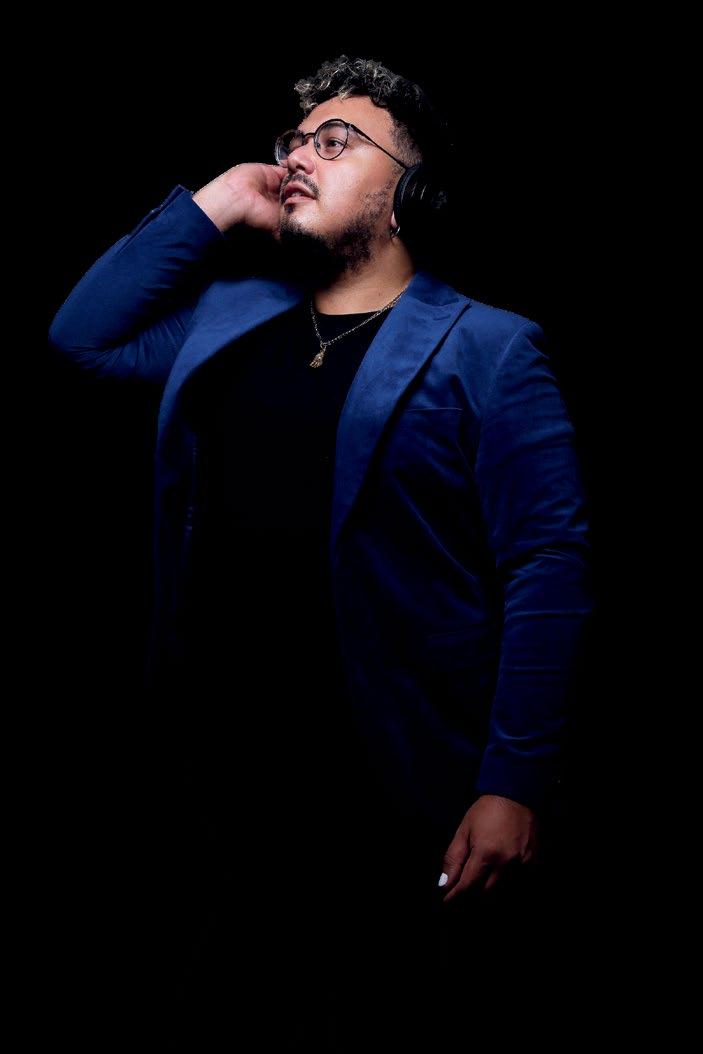




After this year’s AGM several members have stated to me, they wish I could have spent more time talking about the future. I fully agree. I would like to share with you what was intended to be my message to members. A call for all organizations at Lakeside to come together and collaborate for the overall betterment of the community.
While there have been many struggles over the decades, the Lake Chapala Society has done very well in the world that was. But I believe we have an opportunity to create a better LCS. To be a leader in bringing together more members of the Lakeside communities – Mexicans and foreigners. To achieve more than incremental progress towards this goal, we must transform our organization.
The transformation of LCS means to build the capacity and skills to deliver on our vision, faster and better. We must engage more people than we otherwise would have using past models. Thus, broadening of our relevance and impact in our common community.
Perhaps Our motto for the Society as an institution should be, “the relentless pursuit of impact.”
If we succeed in this transformation, our relevancy in the Lakeside community will be assured. If we don’t, our relevancy over time will most certainly decline. It is not possible to stay the same.
“Destiny is not a matter of chance; it is a matter of choice. It is not a thing to be waited for; it is a thing to be achieved.”
– William Jennings Bryan
“Change is the law of life. And those who look only to the past or present are certain to miss the future.”
–John F. Kennedy
One of the highlights of LCS is the diversity of programs and the diversity of engagement. We may not be able to effectively fill every need of every person, but we can enhance what we do and what we offer to the community. The biggest challenge that we as an organization and as a community face - is the lack of re-

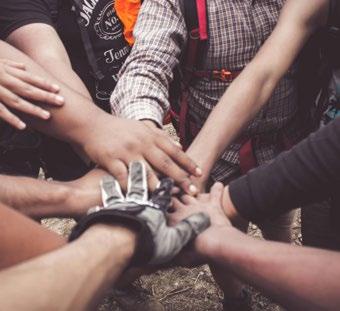
sources. We have very committed volunteers and staff who give so much of their time and talents. But we are only scratching the surface. We need people that can come together to collaborate and share equally in all directions. We can all learn from one another; learning should never be a one-way process.
One of the challenges most every organization faces is the reality of egos. What will it take to bring us together and accept that people are committed to making a difference in any way they can. Leadership expert and author Jim Collins talks about there being room on the bus for those who truly want to make a difference. But we need to come together to determine if people are in the right seats so that the bus can move forward in a positive direction.
Loving music, I reflect on the major musical events of our lifetime such as the Concert for Bangladesh, Live Aid at Wembley Stadium, Farm Aid, A Tribute to Heroes, One World: Together, among others. These events have also globally triggered many smaller community events with impact. Through these mega events, bold statements were made. For all these events a large array of top talent came together –and the common theme was “leave your egos outside.” As the talent entered, they were all committed to having impact and making a difference. If we can leave behind the negative that tears apart, then we can accept what we have in common is to enhance the community around us and we can accept each person giving of themselves in whatever way they are comfortable – or motivated to give – think of the possibilities. We each have the choice to tear down or to build up. Continued on Page
—Our mission is to promote the active participation of Lakeside’s inhabitants to improve their quality of life Lakeside.
— Our vision is a future where all Lakeside residents continually have a role in enriching the community’s quality of life, vitality and prosperity through the exchange of knowledge, expertise, culture, heritage and language.
—Nuestra Misión es promover la activa participacion de los residentes de la Ribera de Chapala, para mejorar la calidad de vida en la comunidad.
— Nuestra Visión es un futuro donde todos los residentes de La Ribera participen continuamente en mejorar la calidad de vida, vitalidad y prosperidad de la comunidad a través del intercambio de conocimiento, experiencia, cultura, patrimonio y lenguaje.
President/Presidente: Steve Balfour
Vice President/Vice Presidenta: Yolanda Martínez Llamas
Secretary/Secretario: Mike Platt
Treasurer/Tesorero: Tim Boardman
Directors/Directores: Christy Caldwell, Greg Custer, Greg Distefano, Madera Glenn, Linda Goman, Steve Graham, Hunter Johnson, Leon Felipe Muñoz, George Radford.
Development Director/Directora de Desarrollo: Claudina González Durán
The magazine’s name, Conecciones - Connections in Englishreflects its purpose, which is to enable the Lake Chapala Society to connect with the Lakeside community. El nombre de la revista Conecciones refleja su propósito, favorecer la conexión de The Lake Chapala Society con la comunidad.
Publisher/Editorial: Lake Chapala Society
Editor-in-Chief/Editor en Jefe: Luis F. Pacheco
Associate Editors/Editores asociados: Sandra Baird, Harriet Hart, Diana Hunt
Production, Art & Design/ Producción, Arte y Diseño: Domitzu Medrano
Proof-reader/Revisión final: Thomas Gay
Translations/Traducciones: LCS
Advertisement inquiries
Conecciones welcomes submissions of articles from Lakeside authors. We reserve the right to edit as necessary. Submissions should be in MS Word approximately 600 words and should be directed to: editor@lcsac.org
Conecciones agradece el envío de artículos. Nos reservamos el derecho de editarlos si es necesario. Los envíos deben ser en MS Word de 600 palabras aproximadamente y deben dirigirse a: editor@lcsac.org
1 Making A Difference
4 El Legado del Tejido en la Vida de las Mujeres
Mexicanas
5 The Role of Weaving in the Lives of Mexican Women
6 About Luis Pacheco
7 Children’s Art Program Painting Winner Announced
8 Leaving a Trace in the World Through Nature
Prints: The Journey of an Artista 9 Dejando un rastro en el mundo a través de huellas de la naturaleza: El viaje de un artista
11 Did you know? / ¿Sabías que? 12 COVER STORY: Mónica Cárdenas 13 ARTÍCULO DE PORTADA: Mónica Cárdenas
LCS-1 Activities
LCS-2 Educational Classes, Open Circle
LCS-4 Bus Trips
LCS-5 A Palette of Dreams 16 Mother’s Day in Mexico 17 “El Día de las Madres en México”
Have Hammer Will Travel: más que carpintería
Have Hammer Will Travel: More Than Carpentry
Lois Schroff, A Unique Lakeside Artist and Teacher
Lois Schroff, una artista y profesora única en la orilla del lago
Mooneen King and Tepehua
King y Tepehua
Animales Bonitos a los que Nunca, Jamás, Deberías
Cute Animals You Should Never, Ever
Singular:
Precios de los Anuncios 2024 Cost / Precio
Back cover / Contraportada (8.5”x11”/ 21.5x28 cm)
$6,600 MXN
Inside front & back cover / Contraportada interna (8.5”x11”/ 21.5x28 cm) $6,060 MXN
Full page / Página completa (7.8 x 10.2”/ 20 x 26 cm)
1/2 page / 1/2 página (4.7 x 7.2”/ 12 x 18.5 cm)
1/4 page / 1/4 página (3.5 x 4.7”/ 9 x 12 cm)
1/8 page-business card / 1/8 página-tarjeta de presentación (3.5 x 2”/ 9 x 5 cm)
$4,590 MXN
$2,775 MXN
$1,465 MXN
All prices include IVA. All ads must be submitted by the 10th of the month for inclusion in the next month’s magazine. Send to sales@lcsac.org
Todos los precios incluyen IVA. Todos los anuncios deben ser enviados antes del día 10 del mes para su inclusión en la revista del mes siguiente. Enviar a sales@lcsac.org

Nonprofits are messy things. That is a reality across the globe. This is often because of two factors – Passion and Power. I have had the honor of meeting thousands of incredibly passionate people who come together to make a difference in something important to them. Because of that passion, many of us get this sense of urgency and that urgency becomes more frequent. That shouldn’t be a bad thing. Those that have the passion, the energy, the time, the commitment and maybe the resources; should be encouraged. On the passion front, I think there is one more level to this passion –it is compassion. Someone once shared with me that the difference between passion and compassion is the ability to feel – feel what others experience and use that feeling to drive your sense of urgency. This can lead to emotions running high – and this makes things messy, but that is a part of nonprofits everywhere.
Power. This is the hard one. Some think that all power is bad.
Passion and power are two potent forces that can significantly influence individuals, organizations, and communities.
Passion refers to intense emotions, desires, and provides the fuel that drives one’s actions, pursuits, and interests. It is the profound enthusiasm and zeal that propels individuals to pursue their goals relentlessly. Passion often stems from deeply held beliefs, values, or interests, and it can manifest in various forms, such as love, creativity, determination, or ambition. When individuals are passionate about something, they invest their time, energy, and resources into it, often achieving remarkable feats and driving meaningful change.
Power, on the other hand, represents the ability to influence outcomes, resources, or people. It can be acquired through various means, including wealth, authority, knowledge, expertise, or charisma. Power can be used for constructive purposes, such as enacting positive change, fostering innovation, or most importantly empowering others.
When passion and power intersect, they can produce both transformative and potentially volatile outcomes. Passionate individuals who wield power can harness their enthusiasm to inspire others, catalyze movements, or advance noble causes. Granted, power needs to stay in check and bringing passionate people together to work as a team can keep things in check, if there are honest and open discussions that allow people to feel valued in what they are able to give. A key part of this is to stay focused on the positive and not allow egos to get caught up in the process. Accept that there are things of value that everyone willing to give, can give.
Throughout history, the interplay between passion and power has shaped the course of events, the outcomes of conflicts, and the trajectory of social movements. Leaders who harness their passion and power wisely can leave a legacy of positive change.
Ultimately, understanding the dynamics between passion and power is crucial for navigating personal relationships, societal structures, and community affairs. By recognizing the potential of both forces and striving to channel them responsibly, individuals and societies can work towards a more equitable, just, and harmonious world.
Going back to leadership mentor Jim Collins writings. There is plenty of room on the bus for everyone willing to enhance what is around us. If we can bring our passions to the table and work together honestly, we can find the right seats for people to fulfil and to move us forward.
We have about 300 volunteers at LCS – and countless more in the community who are dedicated to various worthwhile causes of importance to the community. Can we come together in making a true difference and leaving a collective legacy for the future?
I would like to thank my mentors who have given me the drive that I operate under.
Author and business leaders John Kotter and Jim Collins in his Good to Great in the Social Sector monograph. Dan Pallotta who challenges nonprofits to look at the scale of their dreams. Dan is author of the book Uncharitable which has been made into a recent feature movie. Also, to Joan Garry a nonprofit consultant who works tirelessly to Help the Helpers.
Recommended TED Talk : https://youtu.be/bfAzi6D5FpM?feature=shared




Tejer es pasar hilos de trama (horizontales) a través del telar (abertura) de los hilos de urdimbre (verticales) para crear tela. Esta actividad ha tenido lugar en hogares de todo México durante más de 4000 años. Desde los mayas en las tierras altas de Chiapas, los zapotecas y mixtecas en los valles centrales y la costa de Oaxaca, los otomíes en las tierras altas centrales de México, y los purépechas de Michoacán, el tejido y los textiles han sido, y siguen siendo, una de las actividades más importantes, centrales para la identidad y economía de las mujeres, familias, cooperativas y comunidades de México.
Los tejidos más antiguos se hacían con fibras duras de plantas, como el ixtle del maguey, yucas y palmas. Se hacían artículos utilitarios como canastas y "petates" (esteras) para dormir con estas fibras. Las prendas más antiguas para cubrir y protegerse de los elementos se hacían con pieles, hierbas y otras fibras vegetales. Con la introducción de técnicas de hilado, el algodón nativo se convirtió más tarde en un material importante para tejer. A medida que las civilizaciones y sociedades evolucionaron desde la fase de cazadores/recolectores hasta los asentamientos de aldeas y, posteriormente, a sociedades altamente estratificadas, el tejido, los materiales, los tintes, los motivos y los símbolos se volvieron más distintivos, complejos y variados.
Históricamente y hasta el día de hoy, las mujeres han estado en el centro de la tecnología, la cosmovisión y la instrucción del tejido. En muchas comunidades, el tejido entra en la vida de una niña antes de que pueda caminar, y la acompaña durante toda su vida, e incluso más allá, en la vida después de la muerte. "Después del nacimiento de una niña, se traen herramientas para hilar y tejer a la cuna del bebé", según la fallecida Irmgard Weitlaner Johnson, una de las principales autoridades de México en tejidos y textiles. Y, "al morir una mujer, sus instrumentos de tejido son quemados, para esperarla en la vida después de la muerte".
El conocimiento del tejido se ha transmitido de generación en generación durante miles de años. Es notable que las comunidades hayan mantenido tal saber ancestral sin sucumbir a un mundo homogeneizado, globalizado e industrializado.
Siempre ha sido la obligación de las mujeres, las madres (y a veces abuelas, tías), instruir a sus hijas en el arte del tejido.
Hilado y tejido son centrales para los ritmos de la vida diaria en las comunidades. Después de las tortillas y el desayuno de la mañana, seguido por las tareas del hogar, una mujer se sentaría a tejer durante 4-6 horas. Interrumpiría para las comidas y la familia, para luego continuar tejiendo por la noche si sus ojos se lo permiten. Más allá de la unidad familiar, el vestido tejido tiene un papel importante dentro de la comunidad, siendo un importante identificador del grupo étnico ante el mundo exterior. El vestido etnográfico es una forma de "pasaporte cultural" que indica de dónde vienes; a qué grupo étnico perteneces. ¡Hoy en día hay más de 60 etnias únicas en México!
En la antigüedad, el papel del tejido era tan central que se invocaba a las diosas para solicitar el "don" o habilidad del tejido, especialmente para las hijas. El estatus social y las posibles esposas en la antigüedad serían juzgadas por sus habilidades de tejido. Ixchel, diosa maya de la Luna, estaba asociada con la feminidad y la fertilidad, y también era una tejedora experta.
"Comprender a Ixchel refuerza la conexión que existe entre la identidad femenina y el tejido en la cultura maya y el alto valor que se le da al tejido como actividad. Junto con el matrimonio y el parto, las mujeres que transmiten técnicas de tejido a sus hijas es una de las prácticas que aseguran la perpetuación de la identidad en torno a la cual las comunidades mayas centran su existencia. Por eso merece el patrocinio divino". Cooperativa Trama Textil, Guatemala
Para los aztecas, Xochiquetzal fue la primera mujer que había hilado y tejido. Era la diosa de la fertilidad, la belleza, el amor y las flores, y era patrona de las habilidades practicadas por las mujeres como el tejido y el bordado.

Según Mariana Rivera, antropóloga y productora de documentales en la Ciudad de México, "El tejido tiene que ver con los rasgos femeninos y con las mujeres en general" Y, "en muchas culturas el telar es una forma de escritura, una forma donde las mujeres dan vida a sus pensamientos, preocupaciones y sentimientos".
El tejido hoy en día sigue siendo vital para las comunidades de México. Cuando se le pregunta qué representa el tejido para ella, Elida Merino Valtierra, una mujer amuzga de Xochistlahuaca, Guerrero, dice: "Estoy muy feliz y orgullosa de ser artesana. Amo mi trabajo y el tejido. Mi trabajo tiene valor y es muy respetado en nuestra comunidad." Y, "Organizamos un taller cada verano para apoyar a quienes quieren aprender; principalmente niñas, algunas adultas y algunos niños. No queremos perder el conocimiento que nos enseñaron nuestras abuelas. Hoy en día, estamos compitiendo por la atención con los teléfonos celulares y, como estamos en el centro municipal, algunas jóvenes eligen un camino diferente”.
Las mujeres se han empoderado más, dada la independencia económica que disfrutan al vender sus textiles. Están aprendiendo a vender en línea, a viajar a exposiciones y ferias, donde también ven el mundo fuera de sus comunidades. Las mujeres ya no dependen de los hombres para su sustento financiero. De hecho, algunas eligen no casarse o llevar una vida tradicional que se esperaba de ellas.
¡La próxima vez que admires un textil tejido a mano, ¡ya sabes que hay una mujer orgullosa y talentosa detrás de esta prenda!


Weaving is the passing of weft threads (horizontal) through the shed (opening) of the warp threads (vertical) to create cloth. This activity has taken place in homes throughout Mexico for over 4,000 years. From the Maya in the Chiapas Highlands, the Zapotec and Mixtec in the Central Valleys and Coast of Oaxaca, the Otomi in the Central Highlands of Mexico and the Purepecha of Michoacan, weaving and textiles have been, and remain one of the most important activities, central to the identity and economy of women, families, cooperatives and communities of Mexico.
The earliest weaving used hard plant fibers, such as ixtle from the maguey plant, yuccas and palms. Utilitarian items such as baskets and “petates” (mats) for sleeping were made from these fibers. Earliest garments to cover and protect from the elements were made of skins, grasses and other plant fibers. With the introduction of spinning techniques, native cotton later became an important material for weaving. As civilizations and societies evolved from the hunter/gatherer phase to village settlement, and later to highly stratified societies, weaving, materials, dyes, motifs and symbols became more distinctive, complex and varied.
Historically, and to this day, women have been at the center of the technology, cosmovision and instruction of weaving. In many communities weaving enters a young girl’s life before she can walk and stays with her throughout life, and even beyond into the afterlife. “Following the birth of a girl, tools to spin and weave are brought to the baby’s cradle,” according to the late Irmgard Weitlaner Johnson, one of Mexico’s leading authorities on weaving and textiles. And, “upon a woman’s death, her weaving instruments are burned, so as to await her in the afterlife.”
The knowledge of weaving has been passed from generation to generation for thousands of years. It's
remarkable that communities have maintained such ancestral know-how without succumbing to a homogenized, globalized and industrialized world. This is called cultural resistance.
It has always been the obligation of the women, the mothers (and sometimes grandmothers and aunts) to instruct their daughters in the art of weaving.
Spinning and weaving are central to the rhythms of daily life in communities. After the morning tortillas and breakfast, followed by chores, a woman will sit to weave for 4-6 hours. She will interrupt for mealtime and family, then resume weaving in the evening if her eyes allow. Beyond the family unit, woven dress has an important role within the community, being an important identifier of one's ethnic group to the outside world. Ethnographic dress is a form of “cultural passport” signaling where you come from; which ethnic group you belong to. There are over 60 unique ethnicities in Mexico today!
In ancient times, the role of weaving was so central, Goddesses were called upon to petition for the “don” or skill of weaving, especially for one's daughters. Social status and potential wives in ancient times would be judged by their weaving abilities. Ixchel, Maya goddess of the Moon, was associated with femininity and fertility, and was also an accomplished weaver.
“Understanding Ixchel, reinforces the connection that exists between female identity and weaving in Mayan culture and the high value placed on weaving as an activity. Alongside marriage and childbirth, women passing down weaving techniques to their daughters is one of the practices that ensures the perpetuation of the identity that Mayan communities center their existence around. That's why it's worthy of divine patronage,” per the Trama Textile Cooperative, Guatemala.



For the Aztec, Xochiquetzal was the first woman who had spun and woven. She was the goddess of fertility, beauty, love and flowers, as well as a patroness of the skills practiced by women such as weaving and embroidery.
According to Mariana Rivera, an anthropologist and documentary film producer in Mexico City, “Weaving has to do with feminine traits and with women in general” And, “in many cultures the loom is a form of writing, a form where women give life to their thoughts, concerns and feelings.”




Weaving today is still vital to the communities of Mexico. When asked, what does weaving represent for her, Elida Merino Valtierra, an Amuzga woman from Xochistlahuaca, Guerrero says, “I’m very happy and proud to be an artisan. I love my work and weaving. My work is of value and is highly respected in our community.” And, “We host a workshop every summer to support those who want to learn; mainly young girls, some adults and a few boys. We don’t want to lose the knowledge that our “abuelas” taught us. Nowadays, we are competing for attention with cell phones and since we are in the municipal center, some young girls choose a different path.”
Women have become more empowered, given the economic independence they enjoy from selling their textiles. They are learning to sell online, to travel to expos and fairs where they also see the world outside of their communities. Women are no longer dependent on men for their financial sustenance. In fact, some are choosing not to marry or to have a traditional life that was expected of them.
The next time you admire a hand-woven textile, know there is a proud and talented woman behind this garment!
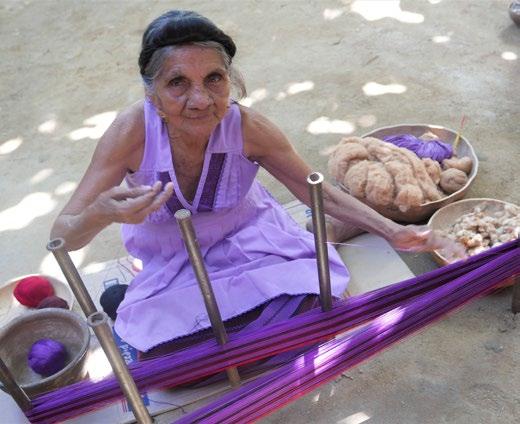
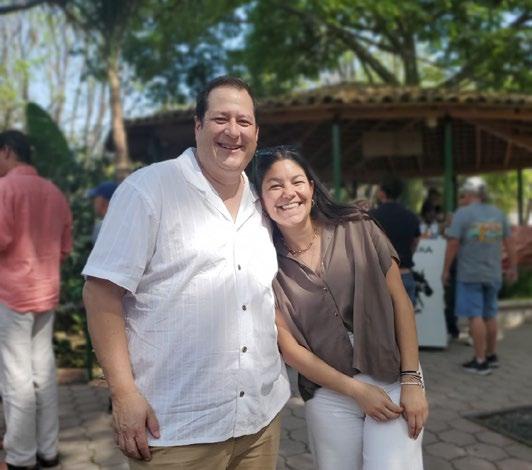
Luis Pacheco believed in Conecciones from the outset. When he began as Executive Director of LCS, the magazine was struggling. Money was tight, and magazines are expensive to produce. Luis assured the editorial team he believed Conecciones was a valuable tool “as “a communication and marketing vehicle to engage specific audiences on what LCS is doing and how relationships within the community can be built.” He took the initiative back in December 2023 to hold a one-day in-service where eleven contributors comprised of LCS staff, Board and volunteers met to hold a planning session for the next twelve issues of Conecciones. Led by Luis, we shared our ideas on how to make our magazine the best it can be in the future. His commitment and ability as a facilitator, his vision and skills, were an inspiration and on behalf of the editorial team, I would like to thank him for his vision and commitment.

Luis Pacheco creyó en Conecciones desde el principio. Cuando empezó como Director Ejecutivo de LCS, la revista enfrentaba problemas financieros. El dinero escaseaba y una revista es cara de producir. Luis aseguró al equipo editorial que creía que Conecciones era una herramienta valiosa “como vehículo de comunicación y mercadotecnia para captar audiencias específicas sobre lo que LCS está haciendo y cómo construir relaciones dentro de la comunidad”. En diciembre de 2023 tomó la iniciativa de organizar una jornada de trabajo en la que once colaboradores, entre personal de LCS, Junta Directiva y voluntarios, se reunieron para celebrar una sesión de planificación de los próximos doce números de Conecciones. Dirigidos por Luis, compartimos nuestras ideas sobre cómo hacer que nuestra revista sea lo mejor posible en el futuro. Su compromiso y capacidad como facilitador, su visión y habilidades, fueron una inspiración y, en nombre del equipo editorial, me gustaría darle las gracias por su visión y compromiso.
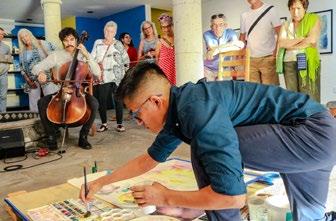
The LCS Children’s Art Program is delighted to announce that Su Elliott is the happy winner of artist Ricardo Sánchez Garcia’s “La Vuelta del Jefe.” A watercolour painting that he generously donated to be raffled off to benefit the Program. When asked how many tickets she had purchased, Su said “only one… I bought it to support the Children’s Art Program… I never win anything!”
Her ticket was drawn on Friday, April 5 at Sol y Luna at 7:30pm by the Program’s 9-year-old rising star Santiago Rubio. The ribbon-cutting ceremony for an exhibition of the artist’s work was
at 5:00pm, followed by a live watercolour demonstration accompanied by a very entertaining pianist and singing cellist. Oscar and his staff at Sol y Luna served food and drinks to attendees and were very attentive to everyone’s needs. Present at the draw were LCS board member Greg Custer and the LCS Executive Director Luis Pacheco.
A total of 539 tickets were sold. Combined with the cash donations made to the Program during the ticket sales, the raffle of the painting raised just over $54,000 pesos after expenses. This should cover the expenses for our Summer Art Camp starting on July 29 and ending on August 2. About 125 local kids will take part in a number of art workshops over five days. There will be a sale of their work on Saturday, August 3.
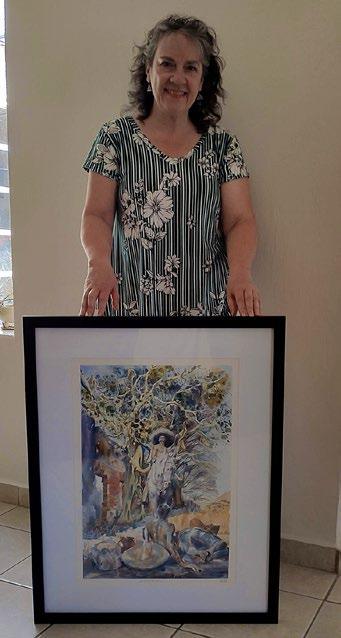
The Children’s Art Program is very grateful to Ricardo and his partner, Andy Friend, for this gracious and generous donation. Ricardo volunteers as a teacher with the Program and will be our Watercolour Workshop Maestro for Art Camp. Much appreciation also goes to Eveline Horelle Dailey who made the arrangements with Sol y Luna.
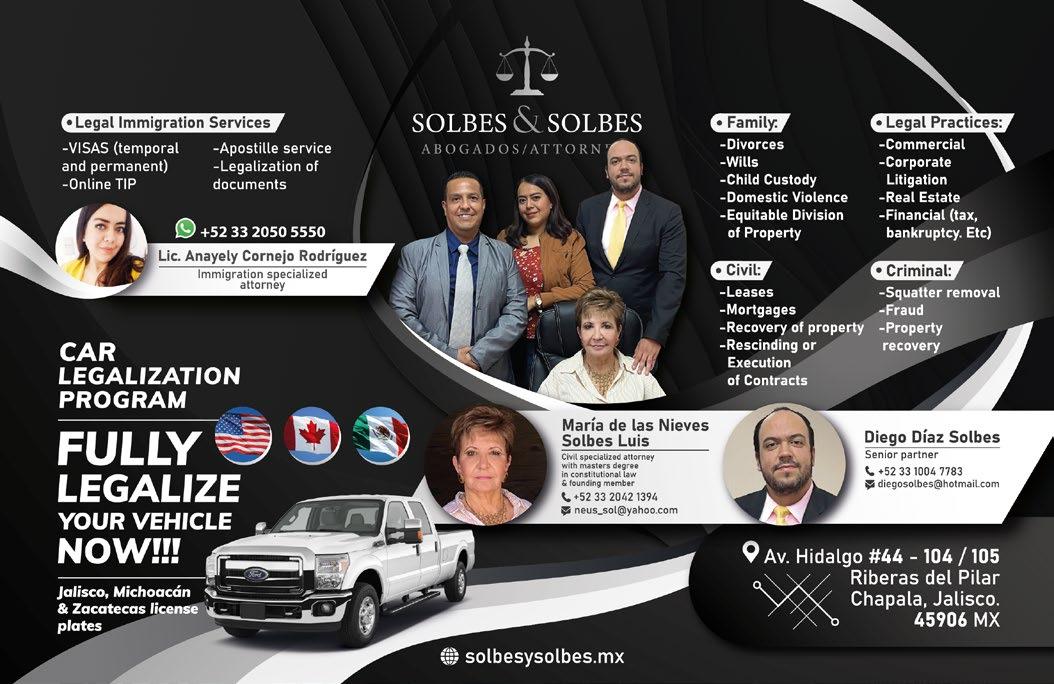
All artists are explorers embarking on a voyage of their own making. Enya Llamas’s artistic journey began with concern for her health during her studies in college and developed into a more profound concern for the environment’s health. She creates art using plants, tree bark and food scraps.
Enya is a twenty-nine-year-old Mexican artist born in Guadalajara, Jalisco. She resides in Chapala with her artist partner, Ana Favela. Discovery for her began on a natural art path at the end of her five-year study in the Visual Arts at the Universidad de Guadalajara. Enya graduated shortly before the COVID pandemic in 2019.
Her art and her care for nature are inseparable. “The best way for me to create my art for the future,” she says, “is to take care of my natural surroundings in the present.” She wants people to know that this environmental way of creativity “is what the world needs.”
Enya’s art voyage set sail as she focused on learning an experimental medium in printmaking called “Ecoprint,” also known as “Botanical Printing.” She desired to create pieces with a more eco-friendly process than the traditional printmaking techniques. In 2018, Enya began her self-taught voyage in printing by walking in nature. She started by gathering tree bark, leaves and flowers, closely observing the artful patterns that nature provided. She experimented by eco-printing them onto cotton paper and included items from her kitchen, like vinegar and salt. Over time, Enya discovered which natural materials best allowed for colors to last and not fade after washing and rinsing.
Enya has been making botanical prints ever since using all-natural materials. She gathers her stash by growing flowers and plants, making her projects self-sustainable. The time she invests in her pieces can take five days to two weeks,
depending on the textile size and whether she uses natural dyes or basic botanical printing. The process begins by cleaning, preparing the fabric and gathering only those plants needed for the piece to avoid waste. The next step is dyeing by placing the plants directly on the fabric. Later, she rinses it and finally irons the fabric, making it ready for use. Her creations look like a flowing dance between earthy colors and textures. Occasionally, a fairy or a face magically appears in the prints provided by the shapes of the petals and leaves.
In 2020, her works expanded from cotton paper surfaces to botanical prints on textiles. And for the first time, Enya began showing her pieces in art markets and exhibitions. Recently, she was selected to create a piece inspired by a cultural exchange between Mexico and Spain organized by Mónica Cárdenas in collaboration with TEAR named “Mirada a Cuatro Ojos.”
A recent interest she has added to her work is printmaking with embroidery on either paper or fabric, stitching intuitively to create a deeper meaning to the uniqueness of her pieces. She has made lamps with her partner Ana, who is also a sculptor, by gathering wood and fusing it with handmade paper to make organic shapes that become attractive lighting structures.
Her project called “La Alquimia de las Hojas”—“Leaves Alchemy” in English, includes wall hangings, embroidered paper and textiles, and the natural dyes in her work create more functional pieces like handbags, lamps, hats, socks, clothes, table runners, placemats, scarves, curtains and more.
Enya also conducts workshops which highlight her warm personality, professionalism and excellent teaching skills. You can navigate her remarkable voyage on Instagram and Facebook and learn skills in one of her popular workshops.

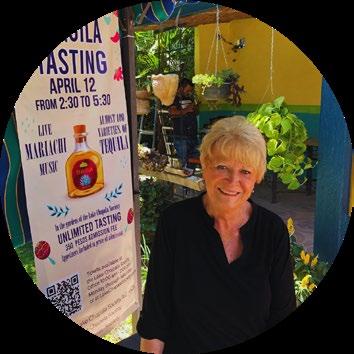
Did you know?
If you’ve attended a tequila or wine tasting at LCS or danced to the music of Blue Jay Slim, it’s thanks to LCS events coordinator Karla Boentgen. Karla has volunteered in the role for thirteen years. She quit twice, but was lured back because she loves the experience of helping people enjoy themselves.
Karla retired to Lakeside in 2009. Prior to that she was sales manager for Warner Brothers Pictures in Germany (for 25 years) rubbing shoulders with the likes of Clint Eastwood, Kevin Costner and Arnold Schwarznegger, who she refers to as Arnie! One of her jobs was organizing film premiers, so she knows the ins and outs of event planning.
Karla is proud to volunteer at LCS and calls it one of the best organizations she has ever been involved with. In addition to organizing fashion shows, a European style Christmas market/party and “anything else that comes up,” Karla is responsible for the bar at all the Concerts in the Park. She uses the Amigos volunteers and the students from the LCS Student Aid Program to schlep the cases of beer and liquor and serve customers. She orders all the alcohol, and supervises the set-up, take-down and bar sales. Hers is a big job, but given her former career, it’s clear she’s more than up to the task.
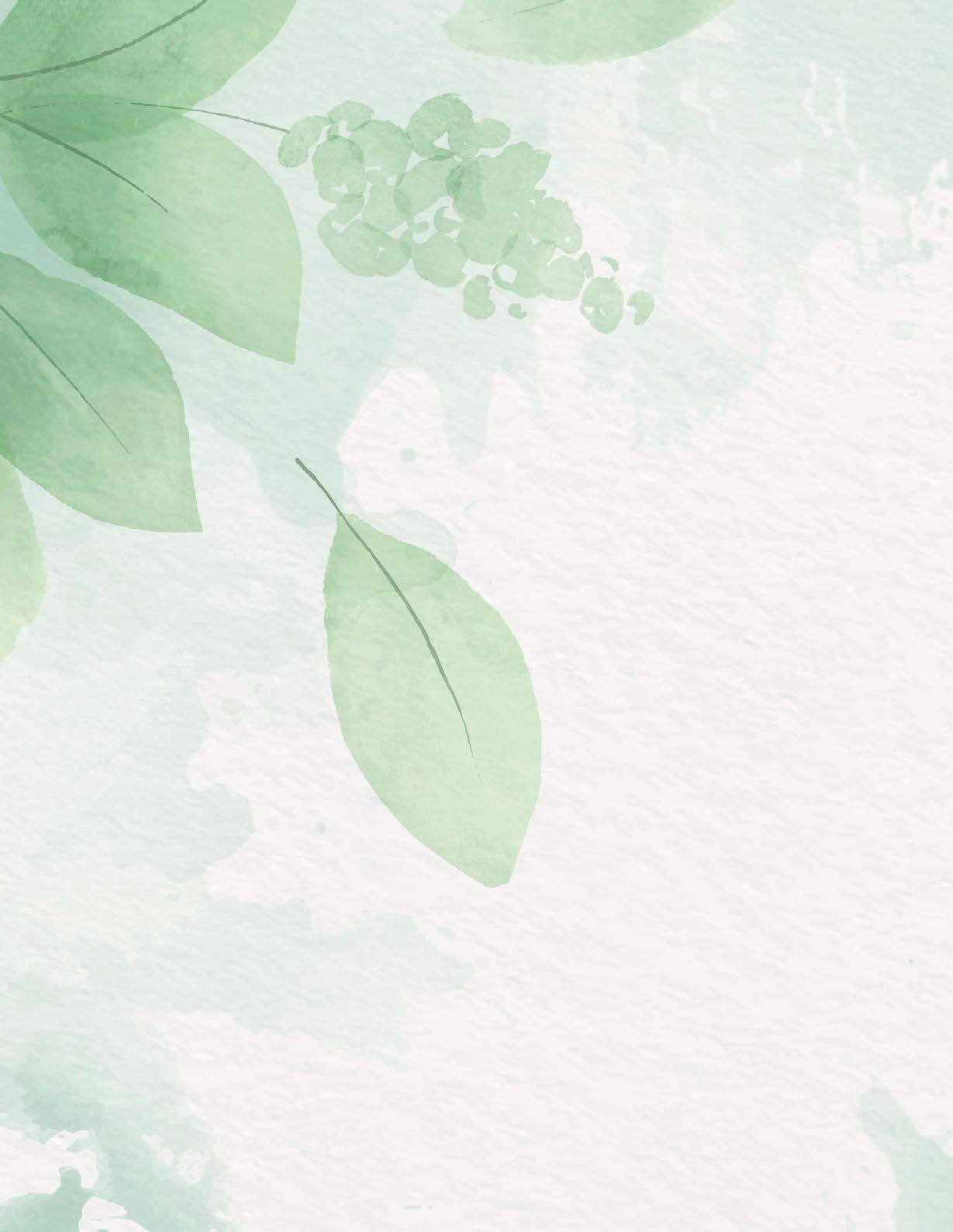

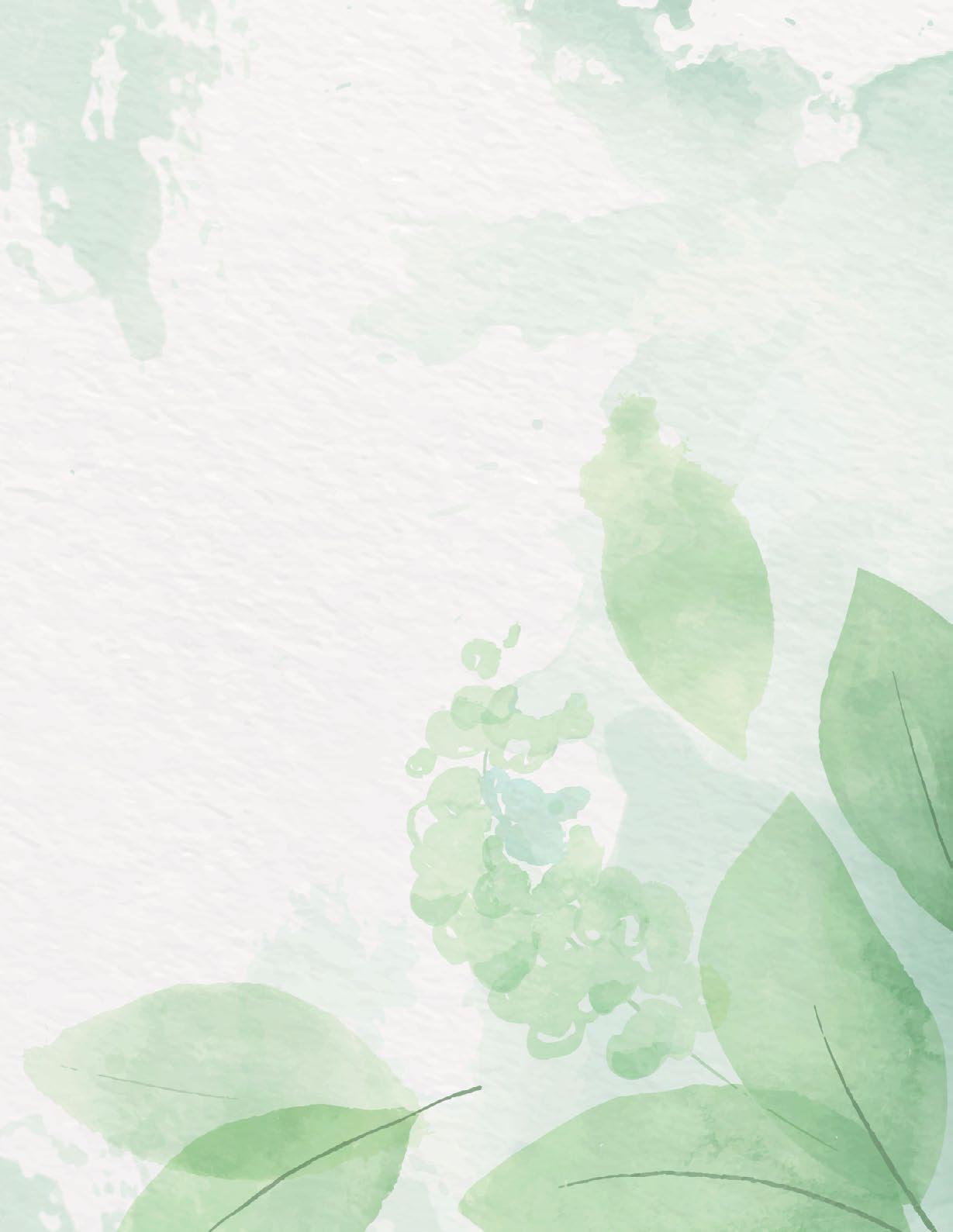
Dejando un rastro en el mundo a través de huellas de la naturaleza:
Todos los artistas son exploradores que emprenden su propio viaje. El viaje artístico de Enya Llamas comenzó con la preocupación por su salud durante sus estudios en la universidad y se convirtió en una preocupación más profunda por la salud del medio ambiente. Crea arte utilizando plantas, corteza de árbol y restos de comida.
Enya es una artista mexicana de veintinueve años nacida en Guadalajara, Jalisco. Reside en Chapala con su pareja artista, Ana Favela. El descubrimiento para ella comenzó en un camino artístico natural al final de sus cinco años de estudio en Artes Visuales en la Universidad de Guadalajara. Enya se graduó poco antes de la pandemia de COVID en 2019.
Su arte y su cuidado por la naturaleza son inseparables. "La mejor manera de crear mi arte para el futuro", dice, "es cuidar mi entorno natural en el presente". Quiere que la gente sepa que esta forma ecológica de creatividad "es lo que el mundo necesita".
El viaje artístico de Enya zarpó cuando se centró en aprender un medio experimental de grabado llamado "Ecoprint", también conocido como "Impresión Botánica". Ella deseaba crear piezas con un proceso más ecológico que las técnicas tradicionales de grabado. En 2018, Enya comenzó su viaje autodidacta en la impresión caminando en la naturaleza. Comenzó recogiendo corteza de árbol, hojas y flores, observando de cerca los patrones artísticos que proporcionaba la naturaleza. Experimentó imprimiéndolos ecológicamente en papel de algodón e incluyó elementos de su cocina, como vinagre y sal. Con el tiempo, Enya descubrió qué materiales naturales permitían que los colores duraran más y no se desvanecieran después de lavarlos y aclararlos.
En 2020, sus obras pasaron de las superficies de papel de algodón a las impresiones botánicas sobre textiles. Y por primera vez, Enya empezó a mostrar sus piezas en mercados de arte y exposiciones. Recientemente, fue seleccionada para crear una pieza inspirada en un intercambio cultural entre México y España organizado por Mónica Cárdenas en colaboración con TEAR llamada "Mirada a Cuatro Ojos".
Desde entonces, Enya realiza estampados botánicos con materiales naturales.

Did you know?
Meet Sarana Donaldson, volunteer assistant manager of the LCS library. Prior to retirement in 2020, Sarana was Vice President of Sales of a small software company. She was able to work remotely and moved to Lakeside seven years ago, finally retiring in 2020. Because Sarana loves reading, she started using the LCS library and soon became a volunteer. “I began initiating projects, such as purging books that nobody had borrowed for years, changing the labels on book spines and cleaning up the library database. Sarana now works two days a week, one day at the circulation desk and one in the library workroom. “It’s a joy to come to LCS, to enjoy the gardens and get to know fabulous people – other volunteers and library patrons.” Saran finds her position rewarding because the library is such an asset to the community. “I have plenty to keep me busy,” she laughs, but “I still have time to read.”
Recoge sus reservas cultivando flores y plantas, lo que hace que sus proyectos sean autosostenibles. El tiempo que invierte en sus piezas puede ser de cinco días a dos semanas, dependiendo del tamaño del tejido y de si utiliza tintes naturales o estampación botánica básica. El proceso comienza con la limpieza, la preparación del tejido y la recolección de las plantas necesarias para la pieza, con el fin de evitar desperdicios. El siguiente paso es el teñido, colocando las plantas directamente sobre la tela. Después la aclara y finalmente la plancha, dejándola lista para su uso. Sus creaciones parecen una danza fluida entre colores terrosos y texturas. De vez en cuando, un hada o un rostro aparecen mágicamente en los estampados que proporcionan las formas de los pétalos y las hojas.
Un interés reciente que ha añadido a su trabajo es el grabado con bordados sobre papel o tela, cosiendo intuitivamente para crear un significado más profundo a la singularidad de sus piezas. Ha realizado lámparas con su compañera Ana, que también es escultora, recogiendo madera y fusionándola con papel hecho a mano para crear formas orgánicas que se convierten en atractivas estructuras de iluminación.
Su proyecto "La Alquimia de las Hojas " incluye tapices, papel bordado y textiles, y los tintes naturales de su trabajo crean piezas más funcionales como bolsos, lámparas, sombreros, calcetines, ropa, caminos de mesa, manteles individuales, bufandas, cortinas y mucho más.
Los talleres de Enya ponen de relieve su cálida personalidad, su profesionalidad y sus excelentes dotes pedagógicas. Puedes navegar por su extraordinario viaje en Instagram y Facebook y aprender habilidades en uno de sus populares talleres.




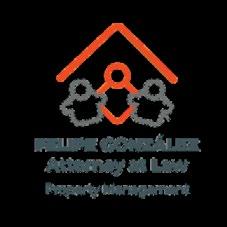



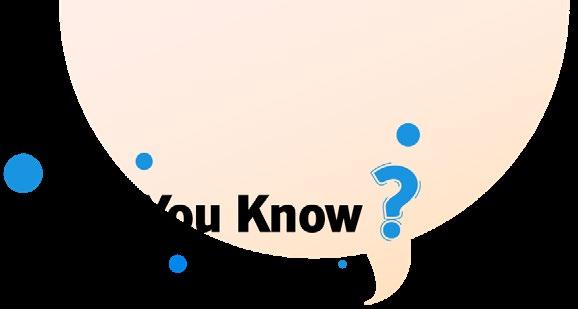 By Harriet Hart
By Harriet Hart
In June 2024 more than 100 million Mexican voters will go to the polls in the largest election in this country’s history. There are three presidential candidates, the two leading contenders being Claudia Sheinbaum and Xóchitl Gálvez. In all likelihood, for the first time in its history, Mexico will soon be governed by a woman.
Mexico has become a world leader in equity politics. It began back in 1996 when lawmakers recommended that 30% of the congressional candidates be women, six years later they mandated this and upped the percentage which, as of 2014, sits at 50%. Since 2018 Mexico’s congress has had a 50/50 split, ten of its 32 states are governed by women, 44% of cabinet positions are held by females and Mexico’s Supreme Court elected its first female president in 2023.
It struck me that LCS is having its own presidential election soon, in August. Ladies, are you paying attention? In the past, we’ve elected five women: Carole Wolff (2018-2020), Nancy Creevan (2004-2007), Mary Alice Sargent (1998-1999), Henrietta Phillips (1978) and Betty Kuzell (1967).
It’s fair to state that LCS couldn’t run without women serving on the Board, employed as staff, and volunteering. Throughout this issue we are presenting cameos of six of them, chosen randomly. We know you’ll enjoy meeting them.
En junio de 2024 más de 100 millones de votantes mexicanos acudirán a las urnas en las elecciones más importantes de la historia de este país. Hay tres candidatos presidenciales, siendo las dos principales contendientes Claudia Sheinbaum y Xóchitl Gálvez. Con toda probabilidad, por primera vez en su historia, México será gobernado en breve por una mujer.
México se ha convertido en líder mundial en política de equidad. Comenzó en 1996 cuando los legisladores recomendaron que el 30% de los candidatos al Congreso fueran mujeres, seis años después lo ordenaron y subieron el porcentaje, que a partir de 2014 se ubica en 50%. Desde 2018 el congreso de México tiene un 50/50, diez de sus 32 estados son gobernados por mujeres, 44% de los puestos del gabinete son ocupados por mujeres y la Suprema Corte de Justicia de la Nación eligió a su primera presidenta en 2023.
Me llamó la atención que LCS tendrá su propia elección presidencial del Consejo Consultivo pronto, en agosto. Señoras, ¿están prestando atención? En el pasado, hemos elegido a cinco mujeres: Carole Wolff (2018-2020), Nancy Creevan (2004-2007), Mary Alice Sargent (1998-99), Henrietta Phillips(1978) y Betty Kuzell (1967).
Es justo afirmar que LCS no podría funcionar sin mujeres en el Consejo, empleadas y voluntarias. A lo largo de este número presentamos perfiles de seis de ellas, elegidas al azar. Sabemos que disfrutarán conociéndolas.
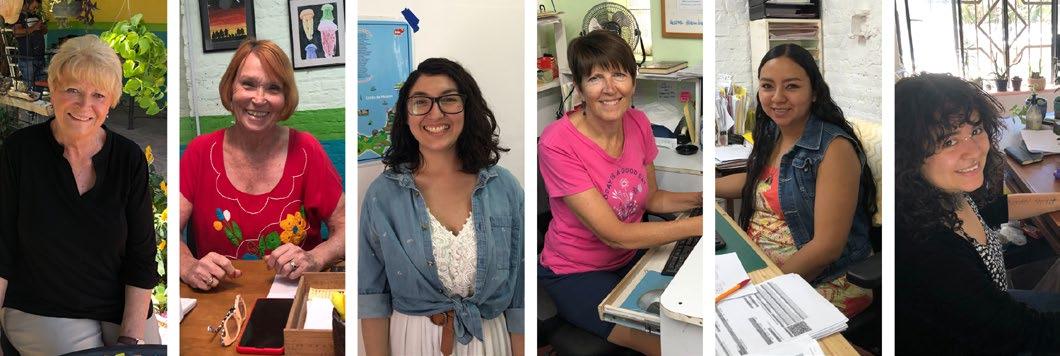
“I define myself as a visual storyteller”
Every time I hold my camera, I experience the sensation of capturing more than just a simple image; I am preserving a story, an emotion, a fragment of life itself.
My goal is not limited to taking photographs, but to tell stories that resonate on a deeper level.
Each image becomes a testament to my personal experience, reflecting my emotions, concerns, and aspirations, shaped by the experiences of my life.

Photography for me is not just an art, it is my means of communicating my own manifesto. It is my vehicle for sharing with the world the stories I encounter along my journey, conveying the emotions and concerns that engulf me in every moment.
I consider it a privilege to be the visual storyteller of both my own life and those whom I am fortunate enough to capture through my lens. Over time, I have explored various concerns that have evolved into visual stories, such as the series on women, the harvest, the pandemic, to name a few. I have also specialized in portraiture. Some series are still in development, as they reflect evolving aspects of my life and environment.
Currently, I am presenting my latest series titled ‘The Beings Inhabiting Lake Chapala’. This series expresses my concern for the current issues affecting Lake Chapala, such
as water supply, pollution, and disruption of natural flow, as well as the concern for the species inhabiting it, which are facing extinction.
In parallel, I have invested time and effort in printing my own images. Initially, through a darkroom, and currently, I operate a Fine Art printing center, (Lakeside Print Service and at Galería MC), located directly in the town square of San Antonio Tlayacapan, Chapala, Jalisco, Mexico.
Although I started by printing only my images, the quality, lifelong experience, and dedication I apply to each print have attracted the interest of other photographers and artists to whom I print with the same dedication as my own. I am proud to see how they appreciate my work and enjoy the final result, which fills me with satisfaction and drives me to continue improving every day.

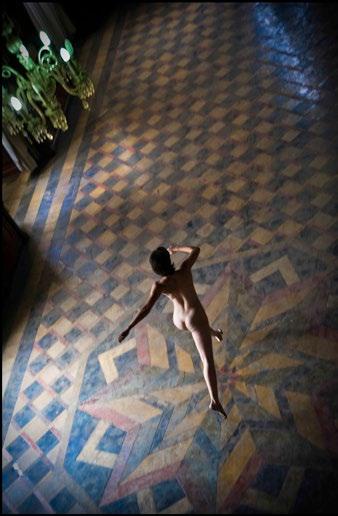
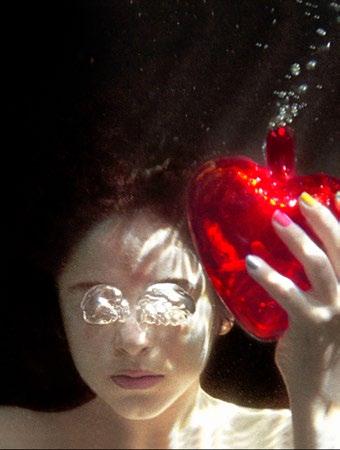
“Me defino como una narradora visual”
Cada vez que sostengo mi cámara, experimento la sensación de capturar más que una simple imagen; estoy preservando una historia, una emoción, un fragmento de la vida misma.
Mi objetivo no se limita a tomar fotografías, sino a contar historias que resuenen en un nivel más profundo.
Cada imagen se convierte en un testimonio de mi experiencia personal, reflejando mis emociones, preocupaciones y aspiraciones, moldeadas por las experiencias de mi vida.
La fotografía para mí no es solo un arte, es mi medio de comunicar mi propio manifiesto. Es mi vehículo para compartir con el mundo las historias que encuentro en mi camino, transmitiendo las emociones y preocupaciones que me embargan en cada momento.
Considero un privilegio ser la narradora visual tanto de mi propia vida como de la de aquellos que tengo la fortuna de capturar a través de mi lente. A lo largo del tiempo, he explorado diversas preocupaciones que se han convertido en historias visuales, como la serie sobre las mujeres, la zafra, la pandemia, por mencionar algunas. Así como me he especializado en el retrato. Algunas series continúan en desarrollo, ya que reflejan aspectos en evolución de mi vida y mi entorno.
Actualmente, estoy presentando mi última serie titulada 'Los seres que habitan el lago de Chapala'. Esta serie expresa mi inquietud por los problemas actuales que afectan al lago de Chapala, como el abastecimiento de agua, la contaminación y la interrupción del flujo natural, así como la preocupación por las especies que habitan en él, las cuales están enfrentando la extinción.
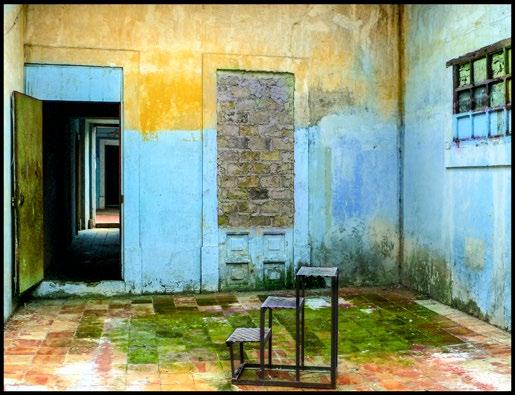
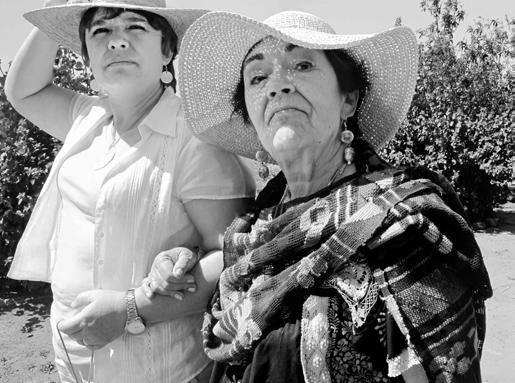
Paralelamente, he invertido tiempo y esfuerzo en la impresión de mis propias imágenes. Inicialmente, mediante un cuarto oscuro, y actualmente opero un centro de impresión FineArt, (Lakeside Print Service y en la Galería MC), ubicado directamente en la plaza del pueblo de San Antonio Tlayacapan, Chapala, Jalisco, México.
Aunque comencé imprimiendo solo mis imágenes, la calidad, experiencia de toda mi vida y dedicación que aplico en cada impresión, ha atraído el interés de otros fotógrafos y artistas a quienes les imprimo con la misma dedicación que las mías.
Me enorgullece ver cómo aprecian mi trabajo y cómo disfrutan del resultado final, lo cual me llena de satisfacción y me impulsa a seguir mejorando cada día."
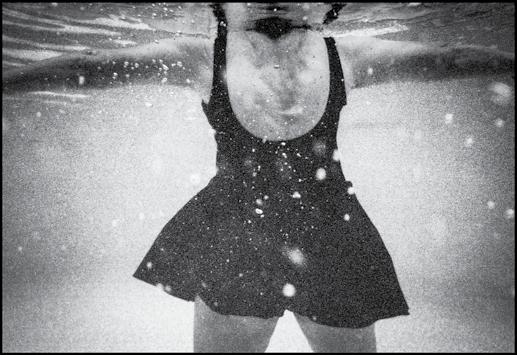
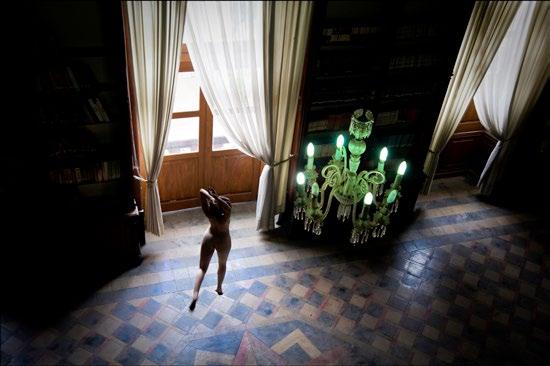


Office & Library Hours: Monday to Saturday 10 am to 2 pm
Grounds open: Monday to Friday 9:00 am to 5:00 pm / Saturday 9:00 am to 2 pm
Bordado Artistico (Spanish)
M+W+F 4-6
Children’s Art - Open to all Sat 10-12 (Children 5 years & under must be accompanied by an adult)
Children’s Chess Club Sat 12-2
Exercise M+W+F 9-9:50
Gentle Yoga & Body Awareness W 10-10:50
Gravity Stone Balancing T + TH 11-12 Ends 9 May
Intermediate Hatha Yoga T 2-3:30
lyengar Yoga F 11-12
Learn to Knit T 12-1:30
Line Dancing, gail@doughertynet.com T + TH 10-11:15
Being Love & Bliss Meditation T 9:30-10:30
Move to the Beat M 10-11
Mudlarks Pottery Open Studio M + F 10-2
Stretch & Balance M +TH 8:45-9:45 harry_bertram@hotmail.com
Spanish in Action classes (español en acción)
See LCS website or in the office for more info Tech Help via Email lcs.tech.training@gmail.com
Write to a Prompt Writers’ Group TH10-12
Book + DVD Libraries M-Sat 10-2
Books on Tape & Library of Congress Talking Books. To order books on-line, you must use a computer or a tablet/iPad. It is not possible to order using a cell phone. Go to lakechapalasociety. com & select libraries/English.
American Mah Jongg TH 10-1
Bridge For Fun F 1-4:30
Discussion Group W 11:15-12:45
Duplicate Bridge W 1-4
English/Spanish Conversation* (Open to public) Sat 12-1:30*
Everyday Mindfulness M 10:30-12
Game Group TH 1-5
Open Circle S 10:30
Scrabble F 11:30-1:30
TED Talks TH 12:30-1:45
Tournament Scrabble T 12-1:50
UFO Cafe Discussion Group 3rd T 1:30-3:30
Hospital San Antonio
TH 10:30-12:30
IMSS & Immigration Services M 10-1 email for appointment to intermexfrancisco@gmail.com
Lakeside Insurance T+TH 11-2
Ribera Medical Center T 10:30-12:30
Shiatsu Chair Massage 1st & 3rd TH 10-12 By appointment only, call 331-604-0971
Audiology - hearing care specialists
T+W+F 9-3 (Consultation fee) Call for appointment 332-945-3267
Becerra Immigration TH 10:30-12:30
Finestra Investment Consulting 3rd TH 10-1
Intercam Banking Services M - F 10-1
Optometrist Claravision TH 9-4 Call for appointment 331-411-1178
Solbes & Solbes 2nd M 10-12
SkyMed 1st W 11-1
*
AA Women’s Meeting T 4-5 Al-Anon (Spanish) M 6-7:30, W 5:30-7:30
Caregivers of Spouses with Dementia T 11-12:30 (Support Group)
Diabetes Support Group Zoom 1st F 1:00 contact welchk4diabetes@gmail.com
Information Desk M-Sat 10-2
AA Open Meeting M+TH 4-5
Needle Pushers T 10-11:45
Ranch Dog Adoption Day 1st W 10-12
Toastmasters M 7-9
Voter Registration M 10-1 until 15 Oct
Democrats Abroad will assist U.S. citizens in registering and requesting absentee ballots on Mondays from 10-1, on the NJ Patio until 15 October. Larry Pihl, larry.pihl@gmail.com, 331-704-6475
Has a temporary change in its schedule for April-mid May. IMSS will be at LCS only on Mondays10-1. Contact person during this time is Francisco Ramos, intermexfrancisco@gmail.com, 331-289-1803. Appointments are by email to Francisco.
May to October, 1 to 3 pm. Friendly and Fun, Basic Knowledge a must. Contact: Claudia Essenburg, ce.tx898@gmail.com, 332-231-3763

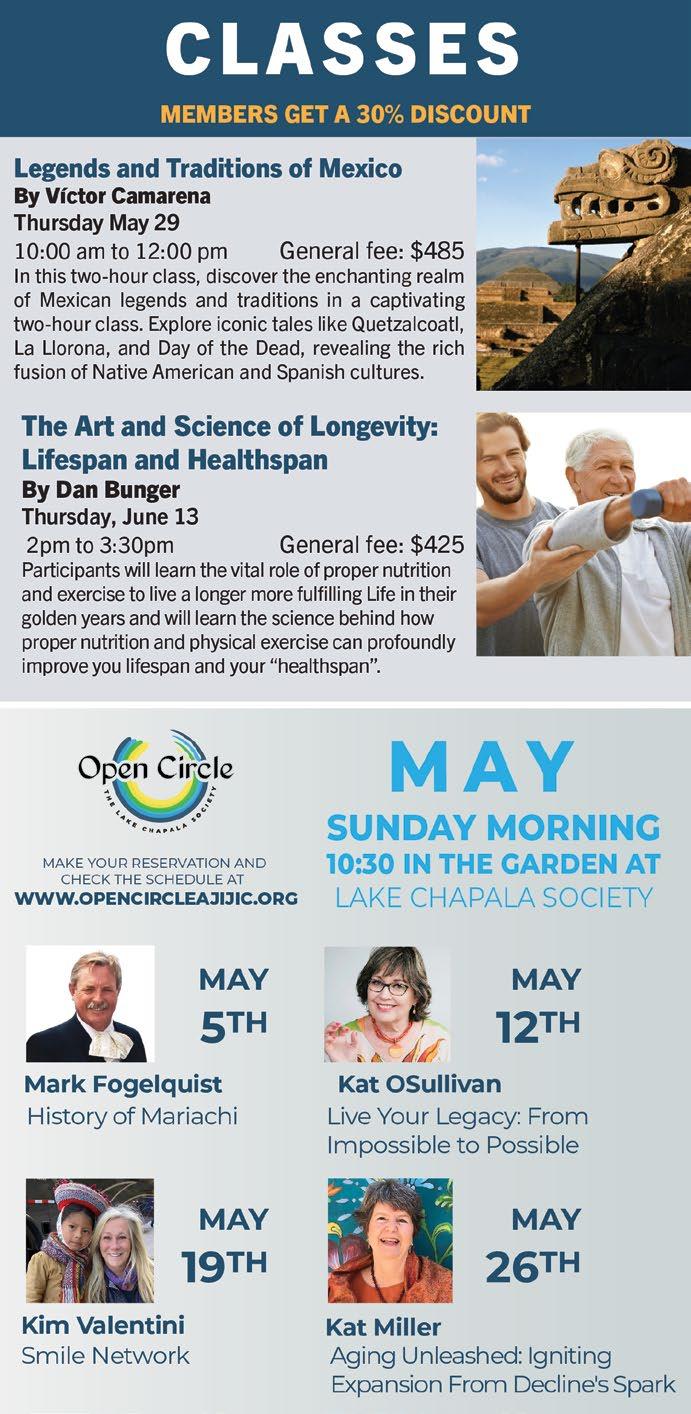
 By Deb Gang
By Deb Gang
In this issue of Conecciones we are celebrating women. Personally, I think we should celebrate women every day of every month; but this is the month we will spotlight books about women’s contributions to society, women’s health, women’s issues and women’s stories.
Our non-fiction collection of books about women’s issues is extensive. In health, you might be interested in Strong Women Stay Young or New Prescription for Women’s Health. To learn more about women’s history, check out Scandalous Women: The Lives and Loves of History’s Most Notorious Women or America’s Women by Gail Collins, covering four centuries of history from the Mayflower to the present; or Women: American Women in Their Own Words. In our Mexican collection, consider Contemporary Mexican Women Writers or Women in Mexico. For a more current look at U.S. women and women’s issues, we suggest Vanity Fair’s Women on Women, featuring essays on subjects from Michelle Obama to Tina Fey to workplace sexual harassment. We also have biographies on numerous contemporary and historical women, including writers, artists, political leaders and celebrities.
I believe that reading historical fiction is one of the best ways to learn about any topic in the most interesting way. To this end, some of my favorite titles include One Thousand White Women, about the westward expansion; Resistance Women, an award-winning novel about fighting the rise of the Third Reich; and Lessons in Chemistry about a female chemist finding her way in an all-male work environment. It is maddening, funny and all too familiar to working women who came of age in the 1960s.
We will also spotlight some of our favorite female authors this month. These amazingly talented women include Barbara Kingsolver, a well-deserved winner of the Pulitzer Prize; Louise Penny and her Three Pines mystery series; and Lisa See, who is well known for her novels about China and Chinese Americans. And no list of popular women writers would be complete without a nod to Jody Picoult, who gets better with every book she writes. And if you like her work, check out the novels of Diane Chamberlain, who writes about equally timely and important topics.
Whatever your interests are, the library has something for you. So, grab a cold drink and a good book and escape into another world. And above all, celebrate all the wonderful women in your life!


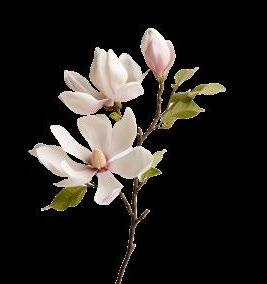
I appreciate the magazine "Conecciones" for providing me with a platform to be heard. My artistic pursuits include being a visual artist, plastic artist, writer, and poet. At the age of 19, I would like to share a bit about myself, and enable you to become acquainted with me.
I've devoted my life to art. I began writing at the age of eight and painting at six. I started with a poem, completely oblivious to the name of this art or the rules, like rhythm and meter, that transform writing into compelling communication.
My books, including The Legacy of the Wilted Flowers and Legacies of a Memory in Loneliness, have been published in various countries such as Canada, United States of America, South Africa, United Arab Emirates, among others. I am also working on three upcoming publications, one of them being a commemoration of the 200 years of Jalisco as a Free and Sovereign State. In these books, I addressed my concern for climate change by supporting measures like print-on-demand and the omission of courtesy pages.
In my art exhibition titled "Thoughts," I maintain this theme of environmental concern by merging poetry with sculpture. It was one of the most attended exhibitions at the Cultural Center Antigua Presidencia in Chapala. I will provide more details about this exhibition, its great acceptance, and support in a future article.
I have exhibited my original works at important events, like the International Book Fair of Guadalajara, for the third year in a row, along with various cultural locations such as the UNESCO World Book Capital and the commemoration of Guadalajara's 482 years. These presentations made in various forums, schools, municipalities reflect a greater social openness to new, young talents with innovative ideas, a situation that fills me with extreme pride.
I have demonstrated the profound impact of art on the reconstruction of society, influencing people's lives and their perception of the world. As a writer, I have donated books to schools and libraries in Jalisco and internationally, ensuring that cultural spaces are not only equipped with materials but also with fresh perspectives. This underscores the importance of literature and publications like Conecciones.
For these reasons, I warmly invite you to join me in a Master Class on Literature and Writing that will be held at The Lake Chapala Society in the coming months. It would be a great honor sharing with you and teaching this class.
As a woman, I've seen the evolution of women's rights over time, particularly during present-day celebrations of these important milestones. Remembering the struggles that enabled women like me to be present in spaces once unimaginable a century ago, to express ourselves, and to possess a voice and vote. This July, we will commemorate 70 years since women were granted the right to vote in Mexico. It is crucial that we continue to raise awareness, be visible, and together build a society where we are all equal and can exercise our rights.
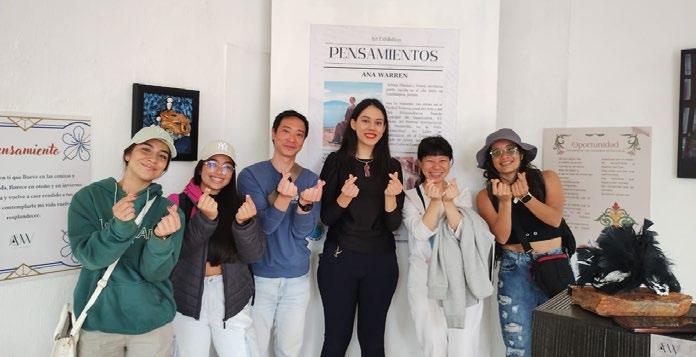
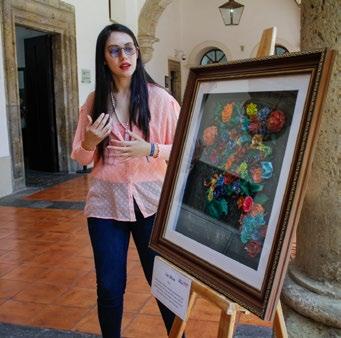
What lessons have I learned thus far? Always persist, take responsibility, have faith in yourself, your potential, as well as your ideas. Everything takes time, and every action impacts both you and all of us. As I always say, "Dreams do come true."
Inspire yourself! Transform the world. Ana Warren
Through your generous contributions to our Annual Fund Campaign, you enabled us to sustain Ana Warren's journey from a beneficiary of our Student Aid Program to a flourishing artist and student. Our Children's Art Program is a testament to the transformative impact of our initiatives here at The Lake Chapala Society. Her story captures the essence of what we aim for: empowering individuals to unlock their full potential, pursue their passions.
Please assist us in the expansion of these vital programs, ensuring that more aspiring individuals, such as Ana, can access the resources and support necessary for their success. Donate today to become part of the ongoing journey towards brighter futures, where boundless potential awaits.
Learn more about Ana: Instagram: @anawarren2021
YouTube: Reportajes con Ana Warren (Spanish language)
Facebook: Ana Warren



Recently, I had an opportunity to casually visit with three different Mexican Women, on three separate occasions. During the conversations, I mentioned that Mother’s Day was forthcoming, which immediately brought smiles to their faces. Their smiles were heartwarming and spoke volumes to me. One of the women even became happily, tearyeyed, during our conversation. As she wiped a tear from her eye, she told me that her emotions were due to many fond memories. While I’m confident she has a lot of great memories, I suspect she may have been politely holding back her laughter at my vain attempt to speak Spanish correctly!
Whatever the case, it became abundantly evident that Mother’s Day is regarded as a very important and significant day of the year. While talking, the women expressed these common sentiments: two of the most meaningful days of their lives were getting married and having children.
Having a special day of the year to celebrate the gift of being a mother is a blessing for me and my family. Although brief, the conversations gave me a renewed sense of the importance of Mother’s Day and of family. In Mexico, the traditions of family and the reverence for mothers is historically part of the culture. However, the actual observance of Mother’s Day in Mexico started in the early part of the 20th century. It began in northern Mexico with residents, who some have suggested were influenced by their U.S. neighbors. Along with an editorial in a Mexico City newspaper, they forged a larger media campaign to establish the observance, which was solidly supported by the Catholic Church. To further the movement, Rafael Alducin, who was the editor of the Mexico City newspaper El Excelsior, began working with the movement and organized the first official celebration of Mother's Day in Mexico on May 10, 1922. Alducin wrote and published an editorial, affirming the ties of motherhood and Mexico's traditional values. Through its formative years the celebration began to take on religious connotations and The Archbishop of Mexico gave his official sanction to the holiday.
Thereafter, images of Madonna and Child started appearing on Mother's Day cards and advertisements. Since Mexico's patron is the Lady of Guadalupe, the holiday grew with a religious and patriotic influence.
Interestingly, Mother’s Day in 1942 was exceptionally special for mothers in Mexico. Time Magazine reported that the Mexican Government ordered the National Pawnshop to return all the pawned sewing machines it held, without requiring the loans to be repaid. The government’s position was that the machines were vital to mothers who needed to clothe their families. The estimated loss to the National Pawnshop was $160,000 dollars. [Source: Time]
I’m certain that all those mothers were thrilled beyond measure! So, however you measure, the fact is that without a mother, we wouldn’t be here to say, “Salud y Feliz Dia de Las Madres!”
Recientemente, tuve la oportunidad de platicar de manera casual con tres mujeres mexicanas diferentes, en tres ocasiones separadas. Durante las conversaciones, mencioné que se acercaba el Día de las Madres, lo que de inmediato les saco sonrisas. Esas sonrisas fueron reconfortantes y me dijeron mucho. Una de las mujeres incluso se puso felizmente y con los ojos llorosos durante nuestra plática. Mientras se limpiaba una lágrima del ojo, me dijo que sus emociones se debían a muchos recuerdos entrañables. Aunque estoy seguro de que tiene muchos buenos recuerdos, ¡sospecho que tal vez estaba conteniendo la risa ante mi vano intento de hablar español correctamente!
Sea como sea, quedó claramente evidente que el Día de las Madres se considera un día muy importante y significativo del año. Mientras hablábamos, las mujeres expresaron estos sentimientos comunes: dos de los días más significativos de sus vidas fueron casarse y tener hijos.
Tener un día especial del año para celebrar el regalo de ser madre es una bendición para mí y mi familia. Aunque breves, las conversaciones me dieron un renovado sentido de la importancia del Día de las Madres y de la familia. En México, las tradiciones familiares y la veneración por las madres son parte histórica de la cultura. Sin embargo, la observancia real del Día de las Madres en México comenzó a principios del siglo XX. Comenzó en el norte de México con residentes que algunos sugieren fueron influenciados por sus vecinos estadounidenses. Junto con un editorial en un periódico de la Ciudad de México, forjaron una campaña mediática más amplia para establecer la observación, que fue sólidamente respaldada por la Iglesia Católica. Para impulsar el movimiento, Rafael Alducin, quien era el editor del periódico El Excelsior de la Ciudad de México, comenzó a trabajar con el movimiento y organizó la primera celebración oficial del Día de las Madres en México el 10 de mayo de 1922. Alducin escribió y publicó un editorial, afirmando los lazos de la maternidad y los valores tradicionales de México. A través de sus primeros años, la celebración comenzó a adquirir connotaciones religiosas y el arzobispo de México dio su sanción oficial a la festividad.
A partir de entonces, comenzaron a aparecer imágenes de la Virgen y el Niño en tarjetas y anuncios del Día de las Madres. Dado que la patrona de México es la Virgen de Guadalupe, la festividad creció con una influencia religiosa y patriótica.
Curiosamente, el Día de las Madres en 1942 fue excepcionalmente especial para las madres en México. La revista Time informó que el Gobierno Mexicano ordenó a la Casa de Empeño Nacional que devolviera todas las máquinas de coser empeñadas que tenía, sin exigir que se pagaran los préstamos. La posición del gobierno era que las máquinas eran vitales para las madres que necesitaban vestir a sus familias. La pérdida estimada para la Casa de Empeño Nacional fue de $160,000.00 dólares.
¡Estoy seguro de que todas esas madres estaban encantadas más allá de toda medida! Así que, lo midas como lo midas, el hecho es quesin una madre, no estaríamos aquí para decir, "¡Salud y feliz Día de las Madres!"

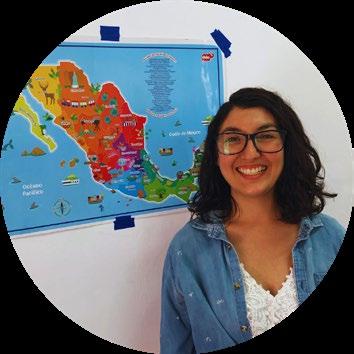
Did you know?
Since 2022, Sandra has worked as the education and culture coordinator for LCS. She saw the advertisement at the Guadalajara Book Fair, applied and had her interview two days later! Her primary role at LCS is teaching the Spanish in Action courses, an eight-level program designed specifically to meet the needs of expats. Sandra tells me she knew she wanted to teach even as a child, and loves her job.
Originally from Guadalajara, she graduated from the University of Guadalajara with a degree in Letras Hispánicas, a five - year program that focuses on Spanish grammar and composition as well as literature.
“I want to be a writer,” she said, “and I’m working on a paranormal novel.” A second hobby is creating dolls and figures from crochet, which she taught herself using YouTube as a guide. Sandra now lives in Ixtlahucan and prefers small town to city life. Her greatest satisfaction in her job with LCS is her students. The last graduating class showed their appreciation by taking her to lunch and presenting her with flowers. She is starting a book club at the Wilkes Center, which she describes as an experiment. It was originally to be in Spanish, but some English speakers joined and she is prepared to tackle the challenge of making it bilingual. She also agreed to write an article for an upcoming issue of Conecciones. LCS is fortunate to have such an enthusiastic young woman on board.
Have Hammer Will Travel (HHWT) comenzó en 2007 como una escuela de carpintería para muchachos jóvenes procedentes de entornos desfavorecidos. Pero ahí se enseña algo más que carpintería. A los alumnos también se les enseñan habilidades para la vida.
“No sólo les enseñamos a trabajar la madera, sino también a planificar, a pensar en el futuro”, explica Carl, supervisor voluntario de Have Hammer Will Travel. “Enseñamos conocimientos profesionales básicos y, a través de experiencias prácticas, nos centramos en el uso seguro de las herramientas manuales y en las habilidades interpersonales necesarias para trabajar con los demás. Les damos confianza en sí mismos para salir al mundo y ganarse la vida”.
La escuela ha crecido y ahora ofrece más tipos de clases a medida que más voluntarios de procedencias más amplias se presentan para ofrecer sus habilidades. Uno de estos voluntarios, Solomon, es un joven luthier (fabricante y reparador de instrumentos de cuerda, como guitarras) que enseña a músicos locales principiantes a fabricar ukeleles, mientras que su propio mentor (un gran nombre en el mundo de la guitarra y la música en el pasado) amplía las posibilidades de este joven enseñándole a hacer incrustaciones de nácar en los instrumentos.
El Consejo de Administración también tomó la decisión de abrirse a hombres y mujeres de todas las edades.
Dos mujeres ejemplifican la diversidad de Have Hammer. Lone es una cincuentona atlética de Dinamarca que lleva 20 años viviendo en México, los últimos años en Ajijic. Siempre le ha fascinado trabajar la madera, pero hasta ahora nunca había recibido formación formal. Cuando se levantaron las restricciones del Covid, vio que por fin se reabrían las puertas de Have Hammer.
“Pasé por allí y pregunté si podían aceptarme como alumna”, explica Lone. “Por fin poder trabajar en un lugar donde tienen todas las herramientas y gente que me puede enseñar es maravilloso”.
Actualmente, Lone está creando una serie de bandejas, bonitas y funcionales, que luego lacará. ¿Su próximo proyecto?
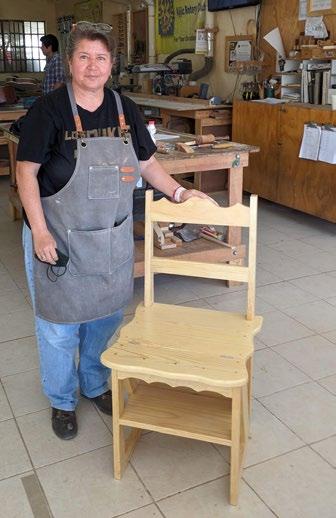
“Mi propio banco de trabajo”, sonríe. “Va a ser un proyecto enorme, pero mis instructores, con su orientación, creen que estoy preparada para abordarlo”.
Lourdes Hernández Salazar, de San Nicolás de Ibarra, se ha beneficiado de las clases semanales de tallado. Ella y otras dos mujeres empezaron juntas hace poco más de un año. Ahora venden sus tablas de tallar, pequeños duendes y otros artículos en Arte en la Plaza, que se lleva a cabo en el Centro Comercial Centro Laguna el primer sábado de cada mes. “Me encontraba en una situación en la que ya no tenía trabajo”, explica Lourdes, “entonces una amiga me habló de este taller. Vine pensando que podría aprender algo para eventualmente ganarme la vida. Siempre estoy aprendiendo más y cómo hacer más cosas, como mi silla que se convierte en una escalera de mano”.
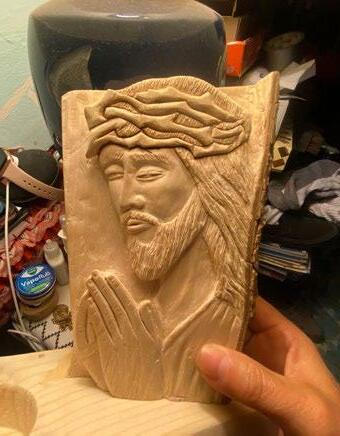
Pero de lo que más orgullosa se siente es de su talla de Jesucristo. El instructor de talla de madera, un profesional experimentado con 40 años de venta de sus tallas dijo que “en lo que a mí respecta, estas damas tienen mucho, mucho talento. Algunas de las cosas que han tallado son tan bonitas que parecen tener un talento natural para la talla”. Y les encanta”, añadió.
Hace unos meses, Lourdes y un par de compañeras paseaban y se dieron cuenta de que unos obreros estaban talando unos jacarandás. Ella sabía que la madera de estos árboles era muy bonita. “Me acerqué a los trabajadores y les pregunté si podíamos quedarnos con lo que acababan de cortar”, explica. “El dueño de la casa salió --por suerte era una mujer-- y dijo ‘sí, claro que pueden quedarse con esta madera’. A cambio, limpiamos todo lo que cortaron, barriendo toda la zona. Voy a utilizar esa madera en mi próximo proyecto, una talla de Nuestra Señora de Guadalupe.
“Todos los profesores son serviciales, abiertos y dispuestos a ayudar”, explica Carl. “Pero cuando toman vacaciones, los alumnos siguen viniendo a trabajar por su cuenta. A veces no conseguimos que los alumnos se vayan cuando acaba la clase. Están muy concentrados y se divierten. Mientras tanto, a nosotros nos da apetito y queremos ir a comer”, se ríe Carl.
HHWT ha pasado de tener una caja de leche llena de herramientas usadas para hacer casitas de pájaros y toalleros a ser un taller en toda regla con toda la maquinaria necesaria para hacer casi cualquier cosa, gracias a una subvención del Club Rotario de Ajijic y a donaciones continuas.
Have Hammer started out as a carpentry school for young boys from disadvantaged backgrounds back in 2007. But more is taught than woodworking skills. Students are taught life skills as well.
“We not only teach them woodworking skills, we teach life skills such as making a plan, learning how to think ahead,” explained Carl, the volunteer supervisor of Have Hammer Will Travel. “We teach basic career awareness and, through handson experiences, we focus on the safe use of hand tools and on interpersonal skills needed to work with others. We are able to give them the self confidence to go out in the world and to make a living.”
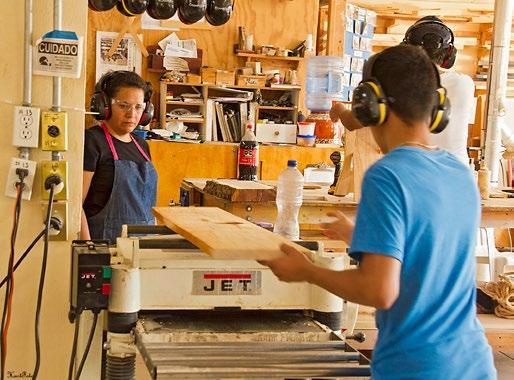
ed. Some of the stuff they have carved is so beautiful, they seem to have a natural talent for carving. And they love it,” he added.
The school has grown to offering more different types of classes as more volunteers from wider backgrounds show up to offer their skills. One such volunteer, Solomon, is a young luthier (maker and repairer of stringed instruments, such as guitars) who is teaching budding local musicians to make ukuleles, while his own mentor (a former big name in the guitar and musical world) is furthering this young man’s possibilities by teaching him how to do Mother of Pearl inlays on instruments.
The Board of Directors also made the decision to open up participation to men and women of all ages.
Two women exemplify the diversity of Have Hammer. Lone is an athletic fifty-something woman from Denmark who has been living in Mexico for 20 years, the last few in Ajijic. She always had a fascination with woodworking but until now never had any formal training. When Covid restrictions were lifted she saw the Have Hammer doors were finally reopened.
“I stopped by and asked if they could take me as a student,” Lone explained. “Finally to be able to work in a place where they have all the tools and people who can teach me is wonderful.”
Currently Lone is creating a series of trays, beautiful yet functional trays which she will then lacquer. Her next project? “My own workbench,” she smiled. “It is going to be a huge project but my instructors, with their guidance, feel I am ready tackle it.”
Lourdes Hernández Salazar of San Nicholas de Ibarra has benefitted from the weekly carving classes. She and two other women started together a little over a year ago. They now sell their carving boards, little gnomes and other items at Art in the Plaza, held in Centro Laguna Mall the first Saturday of every month.
“I was in a situation where I no longer had a job,” Lourdes explained, “then a friend told me about this workshop. I came thinking I could learn something to make a living eventually. I’m always learning more and how to make more things -- like my chair that uniquely hinges into a step ladder.”
But it is her carving of Jesus Christ she is most proud of. The wood carving instructor, an experienced professional with 40 years of selling his carvings under his belt, said that “as far as I am concerned these ladies are very, very talent-
A few months ago, Lourdes and a couple of other classmates were walking and noticed workers cutting down some jacaranda trees. She knew the wood from these trees was quite beautiful.
“I went up to the workers and asked if we could have what they just cut,” she explained. “The owner of the house came out -- fortunately it was a woman -- and said “yes, of course you can have this wood.” In return, we cleaned up after the tree cutters, sweeping the entire area clean. I am going to use that wood in my next project, a carving of Our Lady of Guadalupe.
“All the teachers are helpful, open and ready to assist,” explained Carl. “But when they take vacations, the students keep coming in to work on their own. Sometimes we can’t get students to leave after class is over. They are just so focused and they are having fun. In the meantime, we are getting hungry and want to go for lunch,” Carl laughed.
HHWT has morphed from having a milk crate full of used tools to make birdhouses and towel racks to being a full-fledged workshop with all the big machinery necessary to make just about anything, thanks to a grant from Ajijic Rotary Club and from ongoing donations.

Since 2005 Lois Schroff, a highly admired American artist and writer, has lived at Lakeside where she has given many classes in watercolor painting and become known as one of our outstanding artists. Ajijic Museum of Art displays some of her beautiful watercolors.
Lois grew up in Arlington, VA where she became a successful realtor while raising four children. She took her first painting class with a woman artist who told her that Elliot O’Hara, a highly accomplished watercolor painter, was giving a one-week class in Washington D.C., which Lois took. Soon she arranged for her children to be cared for by her estranged husband while she attended O’Hara’s summer school on the coast of Maine. When Lois heard that O’Hara’s assistant would not be going to his next summer school, she phoned him and asked if he would like her to be his assistant. He immediately replied saying, “Of course, darling.” So, she spent a second summer in Maine taking classes with O’Hara.

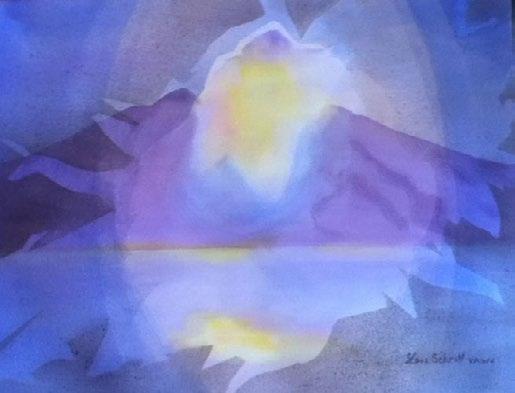
While spending a summer on Virginia Beach, Lois visited Edgar Casey’s Association for Research and Enlightenment (A.R.E.) and discovered the writing of Rudolph Steiner, an architect and esotericist,, who founded anthroposophy, a spiritual movement, in the early 20th century. “Steiner reminded me that I am not only a human being, but a spiritual being with a soul that, when not in a physical body, resides in a spiritual world,” Lois explains.
Steiner was the founder of Waldorf Schools that emphasize the healthy develop of the whole child as a caring, creative human being. Lois then made many visits to a Waldorf School to learn how they nurture creativity.
When her two youngest sons were old enough to be independent, Lois decided to go abroad to study at the Artistic Therapy Center in Gloucester, England with the artist Liane Collot d’Herbois, a follower of Rudolph Steiner. Lois then went on to Holland and Germany to study and work with other artists who were also making art as expressions of their spirituality.
After she returned home to Arlington, VA, Lois kept painting and exhibiting her work in shows and galleries in the D.C. area. Her watercolor paintings were unlike most of the contemporary art in the U.S. at the time. In recognition of the quality of her art, Lois won a number of awards.
People wanted to know more about her methods and her beliefs about color, so Lois wrote and published three books about her theories of color, art and its relationship to spirituality. In her book, Color, Its Relationship to Soul and Spirit, she explains how artists like Kandinsky and philosophers like Rudolf Steiner influenced her. “Not only was I interested in painting, but I was also intrigued by the prospect of using color as a tool for healing.”
Lois’s other two books are A Painter’s Handbook Experiencing Color Between Darkness and Light and Physical and Spiritual Experience of Color: Therapeutic and Artistic Aspects.
One or more of her books are available in the library of the Lake Chapala Society.
On April 5, 2024, Lois, her daughter, three sons and many friends celebrated her 100th birthday. A not-to-bemissed retrospective of Lois’s beautiful, expressive paintings will be exhibited until mid-May at Casa del Sol Inn, Calle Javier Mina #7, Ajijic.
Desde 2005 Lois Schroff, una artista y escritora estadounidense muy admirada, ha vivido en Lakeside donde ha dado muchas clases de pintura con acuarela y se ha dado a conocer como una de nuestras artistas más destacadas. El Museo de Arte de Ajijic exhibe algunas de sus hermosas acuarelas.
Lois creció en Arlington, VA, donde se convirtió en una exitosa agente de bienes raíces, mientras criaba a cuatro hijos. Ella tomó su primera clase de pintura con una mujer artista que le dijo que Elliot O’Hara, un pintor de acuarela bien realizado, estaba dando una clase de una semana en Washington DC, que Lois tomó. Pronto se las arregló para que su marido, del que estaba separada, cuidara de sus hijos mientras ella asistía a la escuela de verano de O’Hara en la costa de Maine. Cuando Lois se enteró de que el ayudante de O’Hara no iría a su próxima escuela de verano, lo llamó y le preguntó si quería que ella fuera su ayudante. Él contestó inmediatamente diciendo: “Por supuesto, cariño”. Así que pasó un segundo verano en Maine tomando clases con O’Hara.
Mientras pasaba un verano en Virginia Beach, Lois visitó la Asociación para la Investigación y la Ilustración (A.R.E. por sus siglas en inglés) de Edgar Casey y descubrió los escritos de Rudolph Steiner, arquitecto y esoterista, fundador de la antroposofía, un movimiento espiritual, a principios del siglo XX. “Steiner me recordó que no soy sólo un ser humano, sino un ser espiritual con un alma que, cuando no está en un cuerpo físico, reside en un mundo espiritual”, explica Lois.
Steiner fue el fundador de las escuelas Waldorf, que hacen hincapié en el desarrollo saludable de todo el niño como ser humano cariñoso y creativo. Lois hizo entonces muchas visitas a una escuela Waldorf para aprender cómo alimentan la creatividad.

Cuando sus dos hijos menores tuvieron edad suficiente para ser independientes, Lois decidió ir al extranjero para estudiar en el Centro de Terapia Artística de Gloucester, Inglaterra, con la artista Liane Collot d’Herbois, seguidora de Rudolph Steiner. Lois viajó después a Holanda y Alemania para estudiar y trabajar con otros artistas que también hacían arte como expresión de su espiritualidad.
Cuando regresó a su casa en Arlington, Virginia, Lois siguió pintando y exponiendo sus obras en exposiciones y galerías de Washington D.C. Sus acuarelas no se parecían a la mayoría del arte contemporáneo de la época en Estados Unidos. En reconocimiento a la calidad de su arte, Lois ganó varios premios. La gente quería saber más sobre sus métodos y sus creencias sobre el color, así que Lois escribió y publicó tres libros sobre sus teorías del color, el arte y su relación con la espiritualidad. En su libro, El color, su relación con el alma y el espíritu, explica cómo artistas como Kandinsky y filósofos como Rudolf Steiner influyeron en ella. “No sólo me interesaba la pintura, sino que también me intrigaba la posibilidad de utilizar el color como herramienta de curación”.
Los otros dos libros de Lois son A Painter’s Handbook Experiencing Color Between Darkness and Light y Physical and Spiritual Experience of Color: Therapeutic and Artistic Aspects.
Uno o más de sus libros están disponibles en la biblioteca de la Sociedad del Lago de Chapala.
El 5 de abril de 2024, Lois, su hija, sus tres hijos y muchos amigos
celebraron su cumpleaños número 100. Una retrospectiva imperdible de las hermosas y expresivas pinturas de Lois se exhibirán hasta mediados de mayo en Casa del Sol Inn, #7 Calle Javier Mina, Ajijic.

Phyllis Jensen is an Amigo who helps staff at the LCS office on Mondays. Phyllis is originally from Edmonton, Alberta where she was a schoolteacher. She purchased a home at Lakeside in 2012, and moved here permanently in 2015. Phyllis taught at Tohui Mocel for four years before retiring. At that point another LCS longtime volunteer, Jane Ffifer recruited her to work in the office, I suspect because she is a natural for the role. She loves meeting new people and helping them sort things out. “My message to our visitors is that we volunteers can’t know everything, but we do our best to find the answers.” Her motive for volunteering is to enjoy the companionship of her coworkers and LCS patrons. She hasn’t given up teaching entirely, either. She teaches her three grandchildren, ages 9, 7 and 3, language arts via Zoom. “I’m teaching them to read, and the youngest one is the keenest.” I suspect he gets his enthusiasm from his grandmother, whose cheerful, enthusiastic personality is perfect as one of the welcoming faces of LCS.

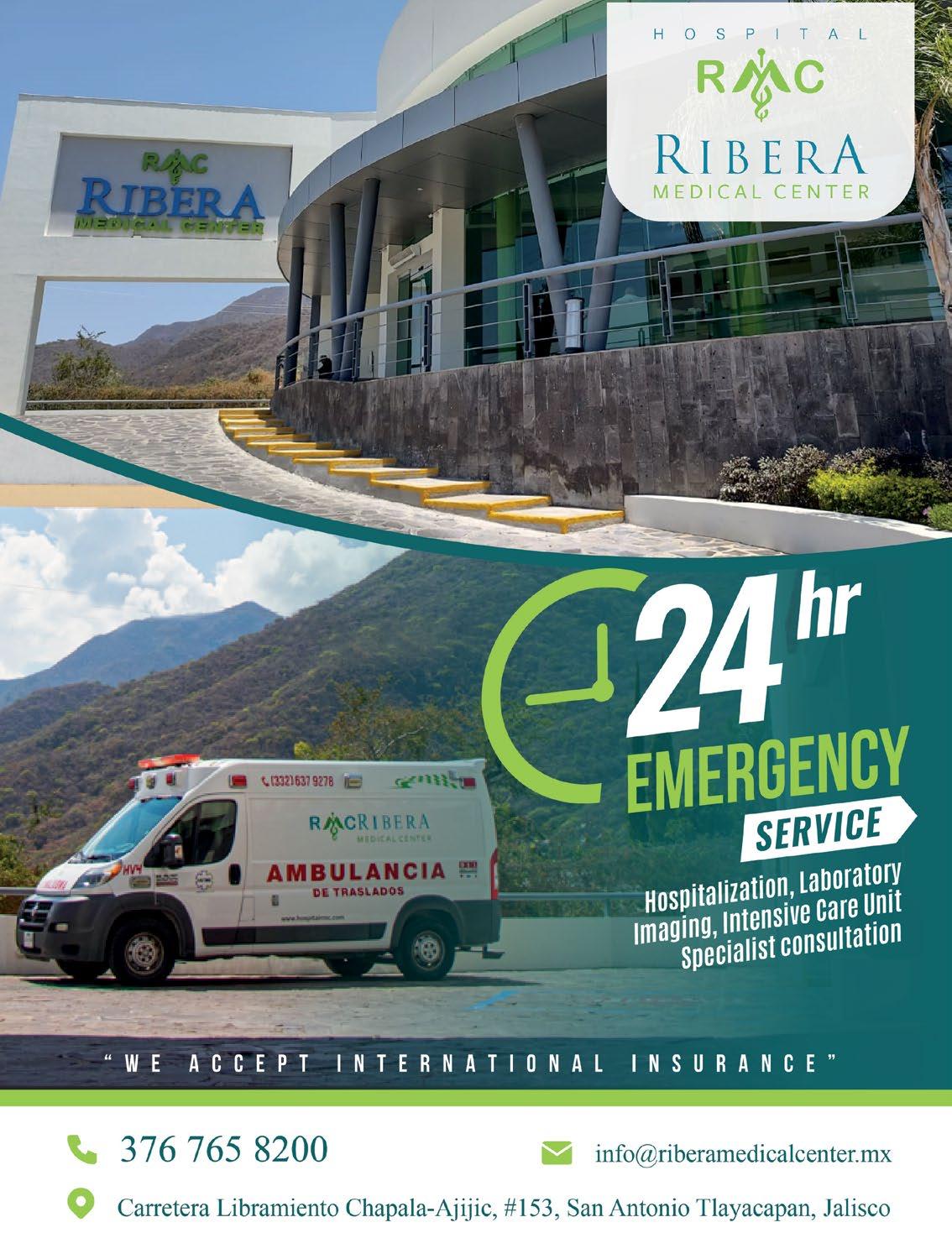
Tepehua is a small indigenous community located in the municipality of Chapala. Its population primarily belongs to the Tepehua ethnic group. Tepehuas are an indigenous people whose name means people of the mountains. Originally, they lived in the Veracruz, Hildago and Sierra Madre areas, but natural disasters eventually caused families to migrate south. As mountain people, they settled in the regions that were familiar to them. Lake Chapala was the perfect place.
The village of Tepehua is known for its scenic beauty, with picturesque views of the lake and surrounding mountains. However, it is very hard to make a living off the volcanic land, which has little soil. Many leave the hill and try to find work in local Lakeside towns. Lack of education has kept them in the barrios. Despite facing challenges such as poverty and marginalization, the community continues to maintain a strong sense of identity.
In recent years, efforts have been made to improve Tepehua’s infrastructure and access to essential services, including promoting education, healthcare and economic development. In the early 2000s, a Mexican woman named Anabel Frutos had been caring for some of the Tepehua children; she also envisioned establishing a community center. Around 2005, a woman named Moonie King met Anabel. Seeing the conditions of Tepehua, she was moved and asked if she could help. She readily accepted the community center project. Moonie dedicated her life to improving people’s lives in the small, impoverished town called Tepehua.
Moonie was instrumental in establishing and running the center. Despite facing numerous challenges, she tirelessly worked to establish the community center, which is now a vital hub for social services, education, health care, and community development.
Some key features associated with the Tepehua Community Center (TCC) include:
Educational opportunities. Sponsorships pay for many of Tepehua children’s tuition and accessories at all levels of education. On Saturdays, English and skill development classes are conducted to encourage and help individuals pursue better opportunities and improve their quality of life.
Healthcare Services. Access to healthcare is a priority at the center. Medical, dental, nutritional and pharmaceutical services are available. In recent years, efforts have been made to improve access to essential services, including initiatives aimed at vaccinations, prenatal care and health education sessions in diabetes and nutrition.
Community Development Initiatives. The center actively engages community members in participatory development projects to improve infrastructure, promote environmental sustainability and enhance economic opportunities. For example, men and women have been taught to sew articles for sale in the Tepehua Bazaar in Riberas, which gives them income and a sense of independence and pride. On the TCC campus, a water purification station has been developed to provide water to communities without potable water and create jobs for Tepehuas. The TCC also conducts a monthly food dispensary.
Overall, the TCC plays a vital role in providing essential services and fostering community engagement. Moonie King’s dedication, perseverance and compassion attracted local and international donors, volunteers, grant money and partnerships with other organizations. Despite facing numerous obstacles, Moonie’s unwavering commitment to Tepehua made a tangible difference in the lives of countless people. Her legacy will live on through the numerous people she helped and the community she served.
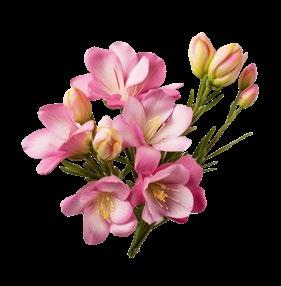
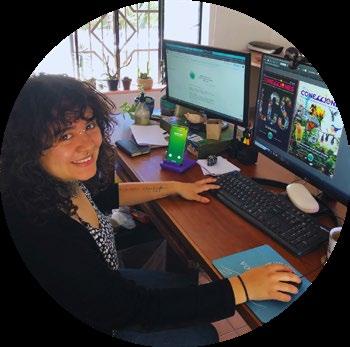
Did you know?
Domitzu Medrano is the Coordinator of Communications and Graphics for LCS. She began six years ago, just a few months before the organization launched Conecciones. Domitzu loves working on the magazine and says it’s her favorite part of her job, which also includes designing ads, banners and posters. When asked how she became interested in graphic design, she said as a child she was fascinated by the t-shirts her parents sold in their store and also the illustrations in books. “Books are the perfect balance – text, images and design.” Domitzu was supported throughout her studies by the LCS Student Aid Program and got such good grades she was selected when a job opening came up. Born and raised in Chapala, Domitzu studied at the University of Guadalajara, part of a large graduating class of 250. She feels fortunate to work at LCS, partly because she is surrounded by the natural beauty of the gardens and partly because she loves having a peaceful, private office where she can be inspired and creative.


Tepehua es una pequeña comunidad indígena ubicada en el municipio de Chapala. Su población pertenece principalmente a la etnia tepehua. Los tepehuas son un pueblo indígena cuyo nombre significa gente de las montañas. Originalmente vivían en las zonas de Veracruz, Hidalgo y la Sierra Madre, pero los desastres naturales hicieron que las familias emigraran al sur. Como montañeses, se asentaron en las regiones que les eran familiares. El lago de Chapala era el lugar perfecto.
El pueblo de Tepehua es conocido por su belleza de paisajes, con pintorescas vistas del lago y las montañas circundantes. Sin embargo, es muy difícil ganarse la vida en la tierra volcánica, que tiene poco suelo. Muchos abandonan la colina e intentaron encontrar trabajo en las ciudades locales de la orilla del lago. La falta de educación les ha retenido en los barrios. A pesar de enfrentarse a retos como la pobreza y la marginación, esta comunidad sigue manteniendo un fuerte sentimiento de identidad.
En los últimos años, se han realizado esfuerzos para mejorar las infraestructuras y el acceso a los servicios esenciales de Tepehua, como el fomento de la educación, la sanidad y el desarrollo económico. A principios de la década del 2000, una mexicana llamada Anabel Frutos había estado cuidando a algunos de los niños tepehuas; también tenía la visión de establecer un centro comunitario. Alrededor del 2005, una mujer llamada Moonie King conoció a Anabel. Al ver las condiciones de los tepehuas, se sintió conmovida y le preguntó si podía ayudar. Aceptó de buen grado el proyecto del centro comunitario. Moonie dedicó su vida a mejorar la vida de la gente en el pequeño y empobrecido pueblo llamado Tepehua.
Moonie desempeñó un papel decisivo en la creación y el funcionamiento del centro. A pesar de enfrentarse a numerosos retos, trabajó incansablemente para establecer el centro comunitario, que actualmente es un centro vital de
servicios sociales, educación, atención de salud y desarrollo comunitario.
Algunas de las principales características del Centro Comunitario Tepehua (CCT) son:
Oportunidades educativas. Patrocinadores pagan la matrícula y los accesorios de muchos niños tepehuas en todos los niveles educativos. Los sábados se imparten clases de inglés y de desarrollo de habilidades para animar y ayudar a las personas a buscar mejores oportunidades y mejorar su calidad de vida.
Servicios de Salud. El acceso a la asistencia sanitaria es una prioridad en el centro. Se ofrecen servicios médicos, odontológicos, nutricionales y farmacéuticos. En los últimos años, se han realizado esfuerzos para mejorar el acceso a los servicios esenciales, incluidas iniciativas dirigidas a la vacunación, la atención prenatal y sesiones de educación sanitaria en diabetes y nutrición.
Iniciativas de Desarrollo Comunitario. El centro también involucra activamente a los miembros de la comunidad en proyectos de desarrollo participativos para mejorar las infraestructuras, promover la sostenibilidad del medio ambiente y aumentar las oportunidades económicas. Por ejemplo, se ha enseñado a hombres y mujeres a coser artículos para venderlos en el Bazar Tepehua de Riberas, lo que les proporciona ingresos y un sentimiento de independencia y orgullo. En el campus del CCT se ha creado una estación de purificación de agua para abastecer a las comunidades que carecen de agua potable y crear puestos de trabajo para los tepehuas. El CTT también lleva a cabo un dispensario mensual de alimentos. En general, el TCC desempeña un papel vital en la prestación de servicios esenciales y el fomento del compromiso de la comunidad.
La dedicación, perseverancia y compasión de Moonie King atrajo a donantes locales e internacionales, voluntarios, subvenciones y asociaciones con otras organizaciones. A pesar de enfrentarse a numerosos obstáculos, el compromiso inquebrantable de Moonie con Tepehua marcó una diferencia tangible en la vida de innumerables personas. Su legado perdurará a través de las numerosas personas a las que ayudó y de la comunidad a la que sirvió.

Vanessa Castañeda has been the accounting assistant at LCS for three years. Prior to being hired as an employee, she benefited from the Student Aid program that supported her through her four and a half years of studies at the local Technological Institute. Vanessa completed her internship and residency at LCS, and was offered a job upon graduation. She says she has LCS to thank for her career. Almost half of her fellow students dropped out of the program for a variety of reasons. Vanessa loves her job, which includes anything and everything to do with accounting like keeping the books, ordering supplies, renting out space and paying bills. She is about to become a mother for the first time and is preparing herself for her new role as a working mom. She likes her coworkers, her tasks and the LCS campus. Her advice to young women starting out is to keep on acquiring skills; she takes advantage of on-line courses (paid for by LCS).
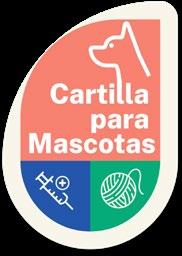
Extraído del boletín de la Dra. Karen Shaw Becker
Que un animal sea curioso no significa que sea amistoso.
Correr hacia un animal extraño e intentar acariciarlo es una de las primeras lecciones que deberían recibir los niños. Rara vez es una buena idea, sobre todo si no has preguntado a su dueño si les parece bien.
Luego están los animales sin dueño: los animales salvajes que comparten la Tierra con nosotros. Muchos son bonitos de ver y la mayoría fascinantes, pero asegúrate de hacerlo con distancia. Intentar tocar o interferir de cualquier otra forma con los animales salvajes no sólo es perjudicial para ellos... también es potencialmente peligroso para ti.
Puede parecer extraño que tengamos que recordar a la gente que no se acerque a ningún animal salvaje, por muy accesibles o inofensivos que parezcan, y sin embargo todos los animales de esta lista tienen historias de gente que han tenido ganas de acercarse a ellos pero con malas consecuencias.
Ciervos: Los ciervos no suelen suponer un riesgo para las personas, pero pueden tener rabia. En otoño, cuando empieza la época de celo, los machos pueden mostrarse agresivos con los humanos, y una hembra puede volverse peligrosa si siente que sus cervatillos están amenazados.
Cisnes: Si un cisne se siente amenazado, emite un grito de alarma. Si no retrocede, puede volverse agresivo. Hace varios años, un hombre de Illinois contratado para cuidar de los cisnes que vivían en un complejo de apartamentos fue atacado mientras estaba en el agua en un kayak. Se cayó del kayak y el cisne siguió atacándole, hasta causarle la muerte. Los cisnes machos son muy territoriales y defienden su nido, sobre todo en primavera.
Delfines: Los delfines son muy inteligentes y tienen fama de ayudar a las personas en el agua, no de hacerles daño. Sin embargo, hay una nueva moda de partos "asistidos por delfines" que podría ser la peor de las ideas. El Instituto Sirius ofrece partos subacuáticos con delfines para "reconectar a los humanos con los delfines", pero como informó CBS News: un poderoso animal carnívoro salvaje podría no ser el compañero ideal para una mujer que da a luz, o para su recién nacido. Los delfines macho pueden ser agresivos y se sabe que han violado y matado a otros delfines;l parecer, los asesinatos también han incluido infanticidios
Suricatas: Las suricatas son animales pequeños, que pesan alrededor de un kilo (más o menos lo que pesa una ardilla). Pero estos animales altamente sociables tienen un modo de protección muy eficaz. Uno de ellos vigila y si detecta a un intruso, todo el clan lo acosa. También se han convertido en una "mascota" de moda, pero las suricatas pueden ser muy destructivas y tienen una de las mordeduras más fuertes de todos los animales, normalmente en la nariz de las personas.

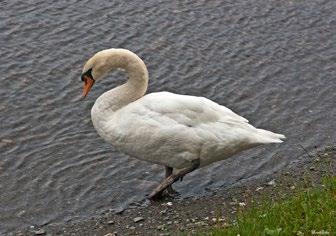

Hipopótamos: Según Paw Nation, los hipopótamos matan cada año a casi 3,000 mil personas en África. Los hipopótamos se cuentan entre los animales más peligrosos del planeta, ya que son conocidos por embestir a los humanos cuando se sienten amenazados. Por desgracia, su hábitat ha desaparecido en su mayor parte y se ven obligados a buscar comida entre los cultivos, enfrentándose cara a cara con agricultores enojados. Es durante estas interacciones con los humanos, así como con pescadores incautos, cuando hipopótamos y humanos se encuentran, una situación que casi siempre acabará con la muerte de alguno de ellos. Sin embargo, un relato especialmente sorprendente habla de un guía turístico en África que fue atacado y engullido por un hipopótamo y vivió para contarlo.
Pandas: Tienen dientes grandes, mandíbulas poderosas y garras afiladas, además de fuerza muscular. Aunque se les considera adorables, pueden ser tan peligrosos como cualquier otro oso y se sabe que son territoriales. En 2014, el expresidente francés Valery Giscard d'Estaing entró en la jaula de un panda en un zoo de París. El panda saltó sobre él y tuvo que ser retirado por los trabajadores del zoo.
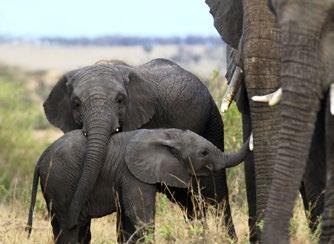


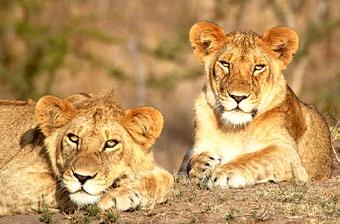
Just because an animal is cute, it doesn’t mean it’s friendly. Not running up to and trying to pet a strange animal is one of the first lessons children should be taught. It rarely is a good idea, especially if you haven’t asked its owner if it’s ok. Then there are the animals with no owners -- the wild animals that share the Earth with us. Many are cute to look at and most are fascinating to watch, but be sure you do so from a distance. Trying to touch or otherwise interfere with wild animals is not only disruptive to them … it’s potentially dangerous to you. It may seem strange we would have to remind folks not to approach any wild animal, no matter how approachable or harmless they seem, and yet all the animals on this list have stories of people compelled to approach them, with bad consequences.
Deer: Deer do not generally pose a risk to people, but they may be rabid. In autumn, when mating or “rutting” season begins, bucks can be aggressive toward humans, and a doe may become dangerous if she feels her fawns are threatened.
Swans: If a swan feels threatened, it will give out a warning call. If you don’t back off, it may become aggressive. Several years ago, an Illinois man hired to care for swans living at a condo complex was attacked while on the water in a kayak. He fell out and the swan continued attacking, causing the man to drown. Male swans, in particular, are known to be highly territorial and will defend their nest, especially during the spring nesting season.
Dolphins: Dolphins are highly intelligent and have a reputation for helping people in the water, not hurting them. However, there is a new trend of “dolphin-assisted” birth that could be the worst idea ever. The Sirius Institute offers underwater births with dolphins to “reconnect humans with dolphins,” but as CBS News reported: a powerful, wild carnivorous animal might not be the ideal companion for a woman giving birth, or for her newborn. Male dolphins can be aggressive and have been known to rape and kill other dolphins; killings have also reportedly included infanticide.
Meerkats: Meerkats are small animals, weighing in at about two pounds (about the weight of a squirrel). But these highly social animals have a very efficient mode of protection. One stands watch as guard and if an intruder is spotted, the entire clan will mob him. They’ve also become a somewhat trendy “pet,” but meerkats can be highly destructive and have one of the strongest bites of any animal, usually going for people’s noses.
Hippos: Nearly 3,000 people are killed by hippos in Africa every year according to Paw Nation. Hippopotamuses are among the most dan -
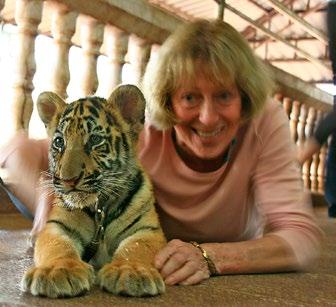
gerous animals on earth because they are known to charge humans when threatened. Unfortunately, their habitat is mostly gone and they are forced to forage among crops, coming face to face with angry farmers. It is during these interactions with humans, as well as unwary fishermen, that hippos and humans come together, a situation that will almost always end in someone’s death. One report of a particularly striking account, however, told of a tour guide in Africa who was attacked and swallowed by a hippo — and lived to tell about it.
Pandas: Pandas have large teeth, powerful jaws and sharp claws, along with muscular strength. Although they’re thought of as cuddly, they have the potential to be as dangerous as any other bear, and they are known to be territorial. In 2014, former French President Valery Giscard d’Estaing entered a panda cage at a Paris zoo. The panda jumped on him and had to be removed by zoo workers.
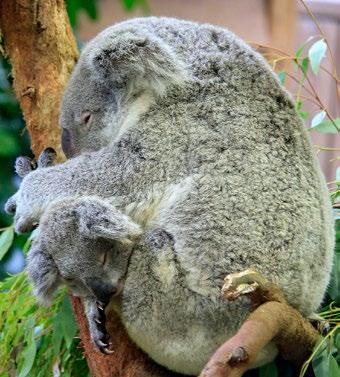
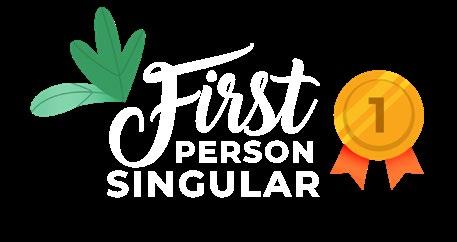
Her full name is Doctor Gladys T. McGarey, MD, MD(H) and she is The Mother of Holistic Medicine, and my long-distance doctor when the need for her counsel arises. She is also my mentor, my friend and, for sure, my teacher. For decades, every Tuesday night I was at her home for her study group/conversations: studying, laughing, talking about dreams was partially what we did, and yes, we were there for crying when necessary.
For now, let me tell you about this formidable woman who is 103 years old. At 102 her latest book titled A Life Well Lived was published. She has a 10-year plan! Her words bring to the front the stuff you can learn to keep the juices of your life moving. Dr. Gladys, like most of us, had her share of difficulties. She became a doctor when women were expected to be bare foot and pregnant. After graduating as an MD, she drove to the hospital where she was to practice – that was in Pennsylvania. She parked under a sign: RESERVED FOR DOCTORS, the guard told her she could not park there! She simply said, “I am a medical doctor” and kept on walking.
You see, born in India, living in the shadows of the Himalaya mountains, where her parents were American medical missionaries, tending to multitudes, among them the untouchables, Gladys learned assertiveness. When she was two years old, her busy mother had her tend to a wounded elephant. Gladys cleaned and dressed the wound. This was when she knew she was born to be a doctor. She knew the spirit of this majestic animal would take over the healing process. Dr. Gladys knew her patients also had the capacity to heal themselves of 90% of their ailments. I, as one of her thousands of patients, learned her approach to medicine in a Holistic way. When she brought Acupuncture to the USA, the AMA accused her of being a witch! She became the co-founder of the American Holistic Medical Association. The word Holistic is now known globally.
Dr. Gladys knew long ago that health came from within, when moving our body, not necessarily at a spa but taking the movements of life seriously. Having great dreams, laughing and not getting stuck too long to the things we feel bothersome are her prescriptions. Often on Tuesday nights, she said in Hindustani “Kuch par wa nay.” She used this phrase when she felt our conversation/discussion was coming from our ego and was not terribly important. This phrase came with a gesture; she would look at her hand and throw
something behind her. “Kush par wa nay.” When something is behind us it does not matter! The universe can tend to what we judge distressing. Now decades later, I find myself doing that with a smile. At first, I would pick up a pebble, a symbol of what was bothering me, and throw it behind me. On Tuesday nights this great teacher told us about the value of life itself. I also learned to listen carefully and laugh with ease. I also cry in gratitude or in pain. Dr. Gladys taught me to talk to every cell in my body and to remind them and myself that the function of life is to be alive. Do this and the doctor within takes over the healing processes. Many secrets are available to all of us; not being afraid of the labor it takes to achieve a well-lived day is one of the keys.




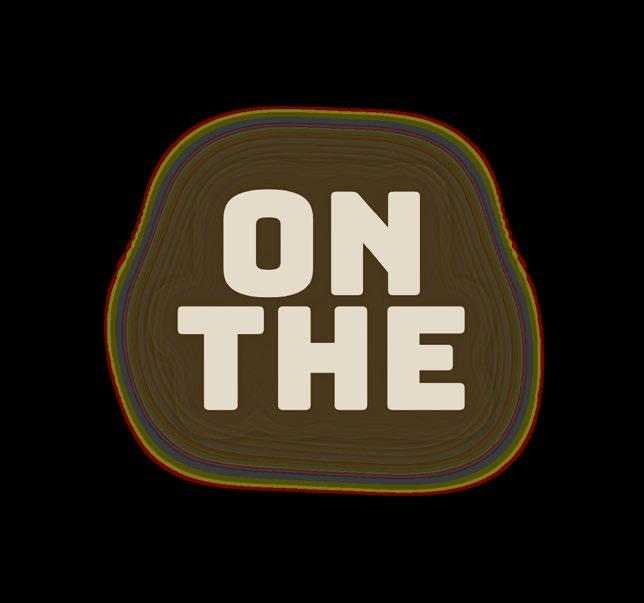








Sunday, May 19
Show at 5:30 PM
VIP Table seating $500
General seating $350
Show at Lake Chapala Society
Tickets available at the Lake Chapala Society Office 10:00 am - 2 pm
Monday through Saturday, or at LakeChapalaSociety.com

